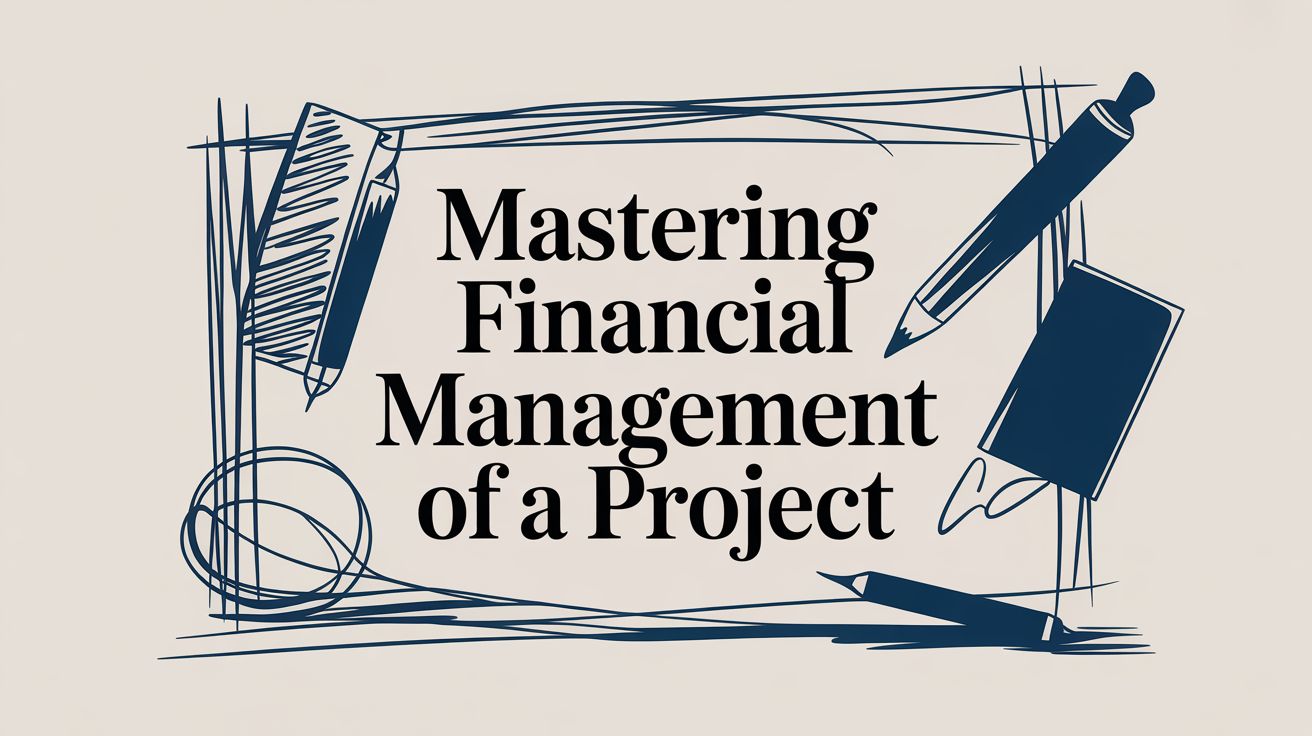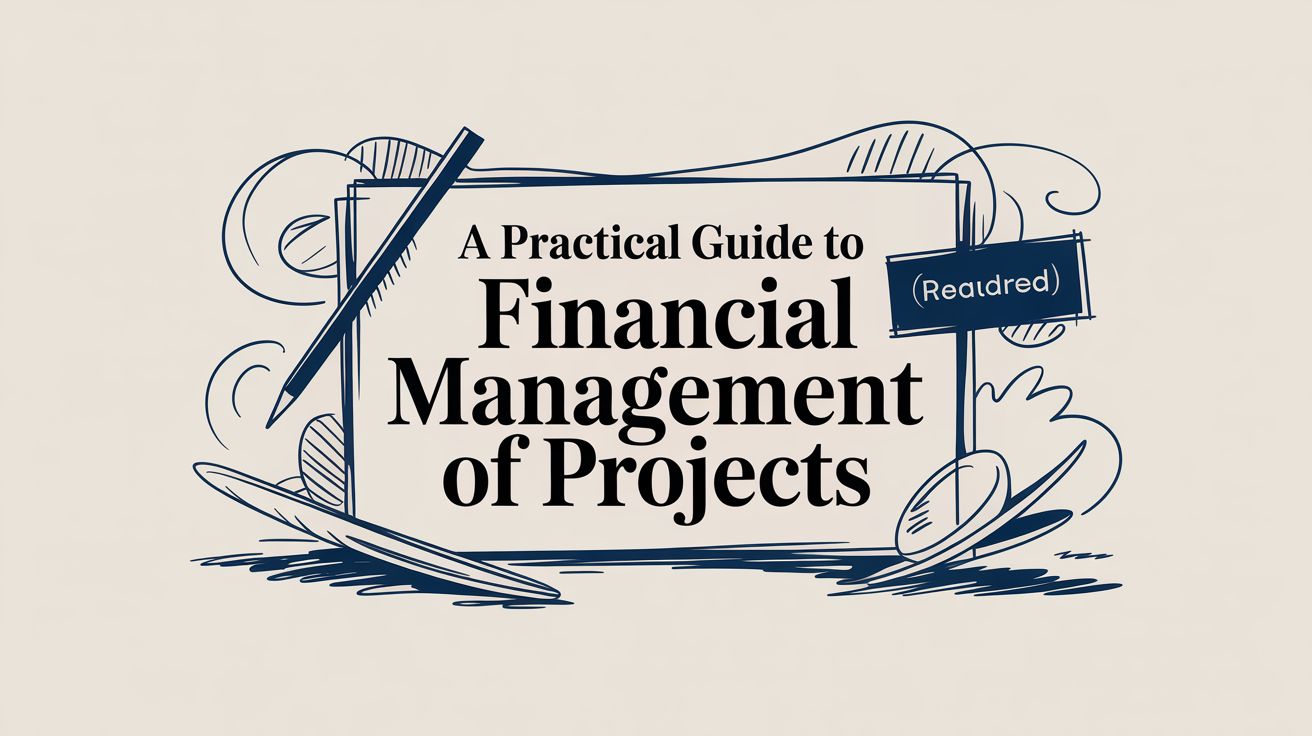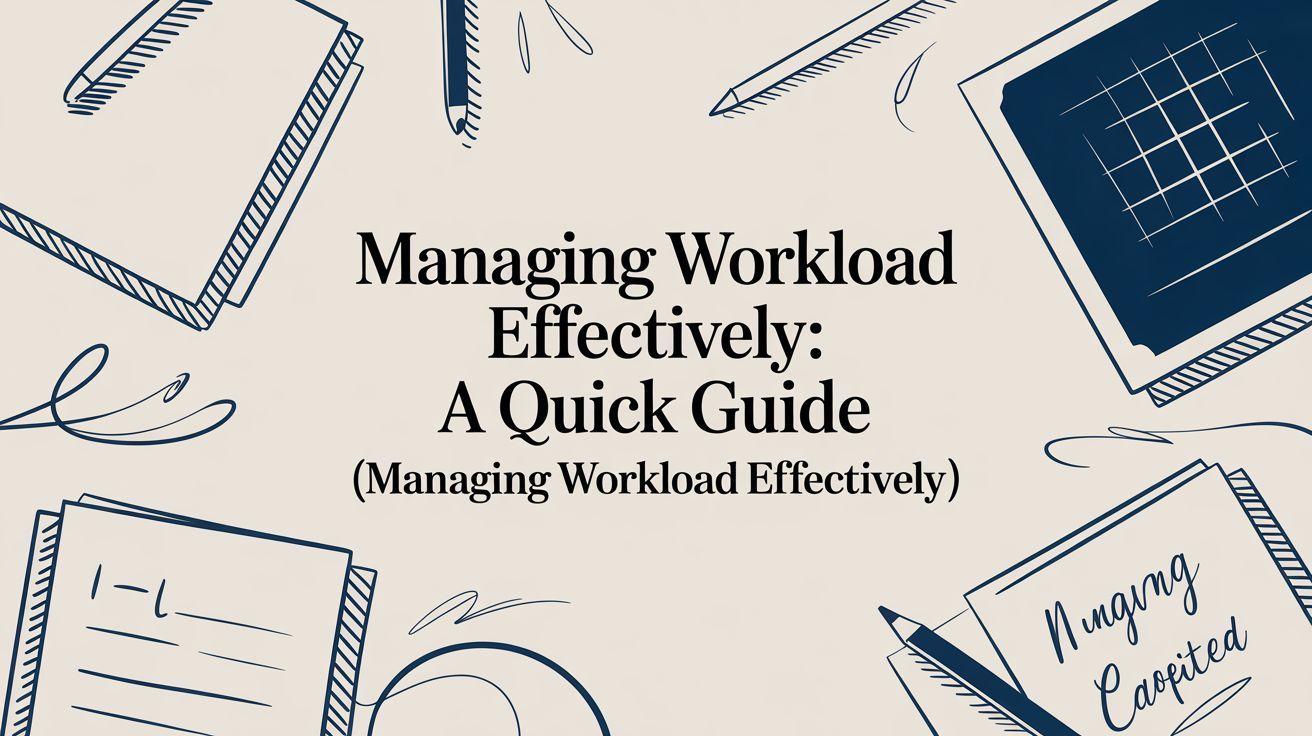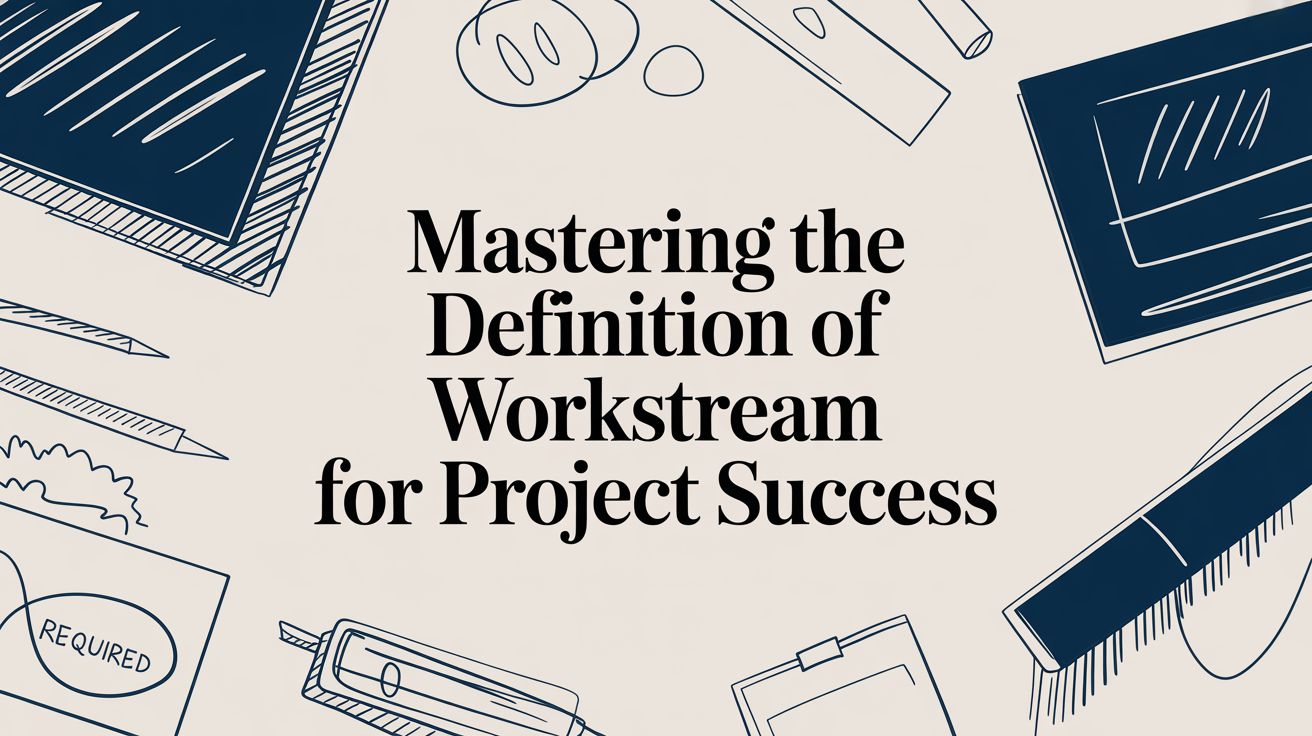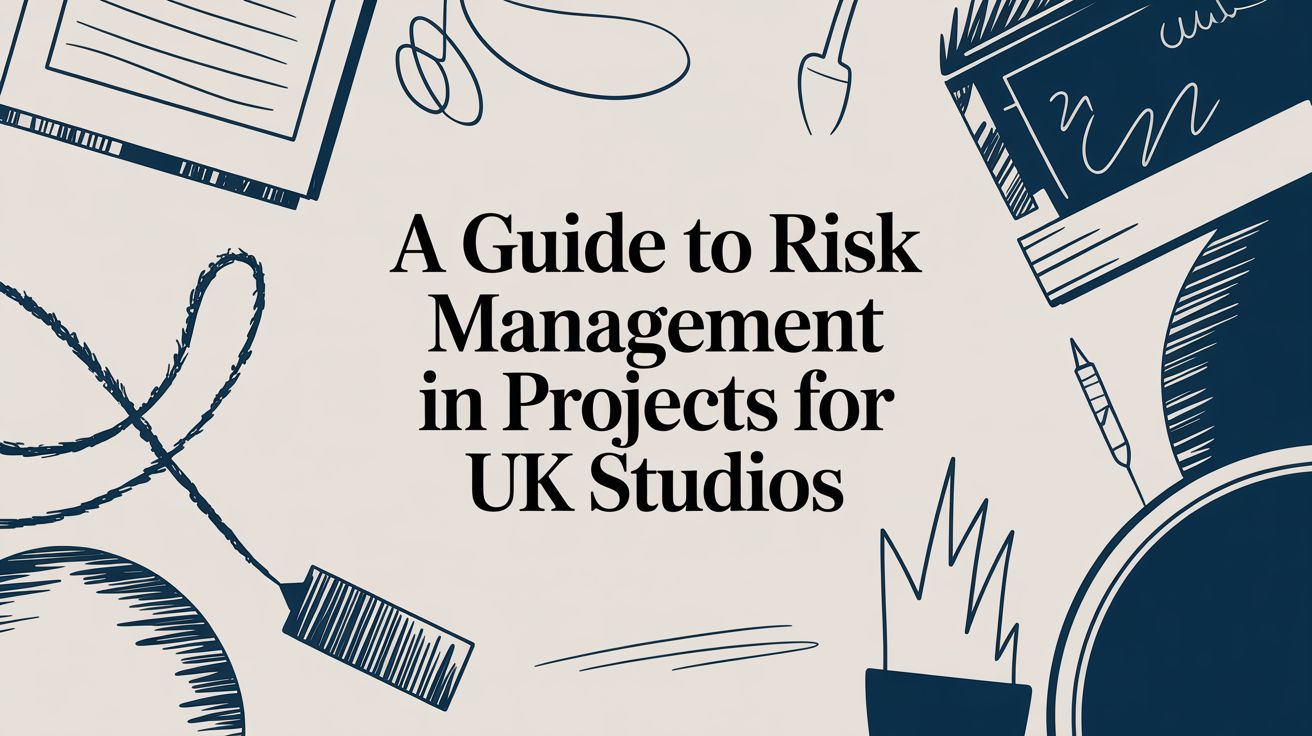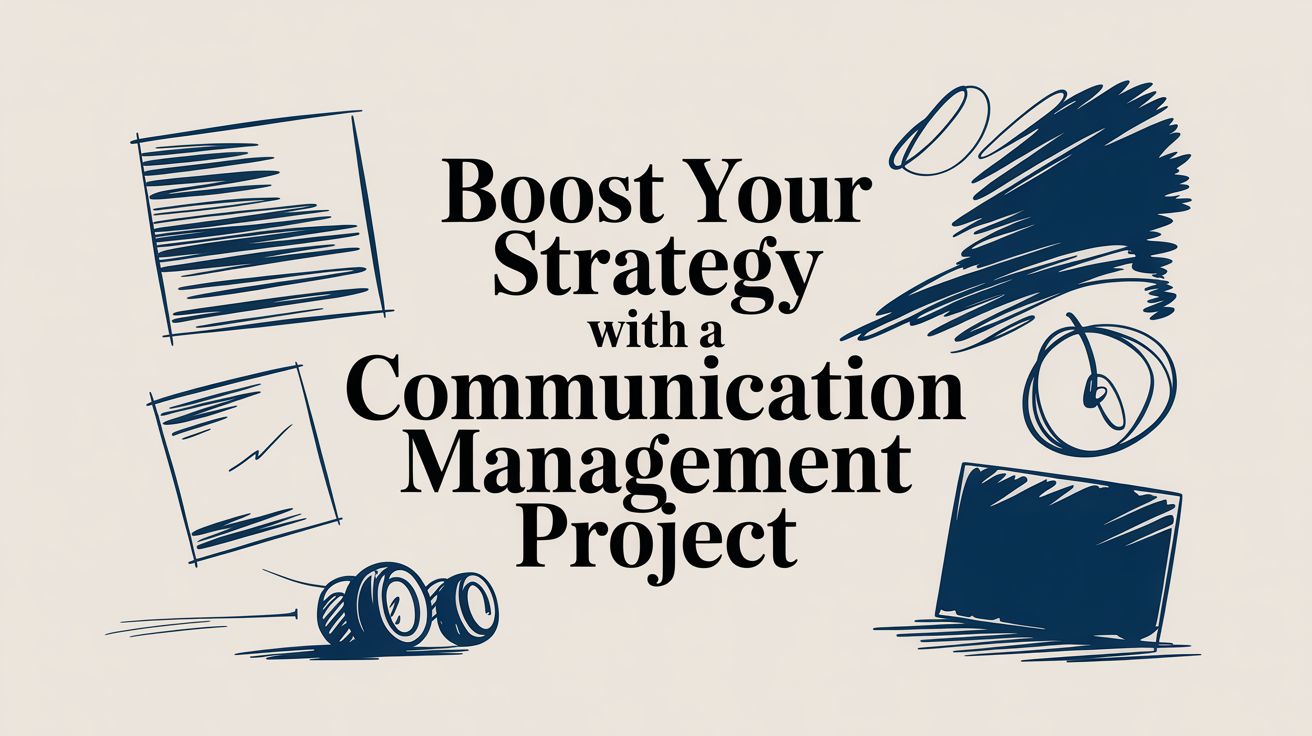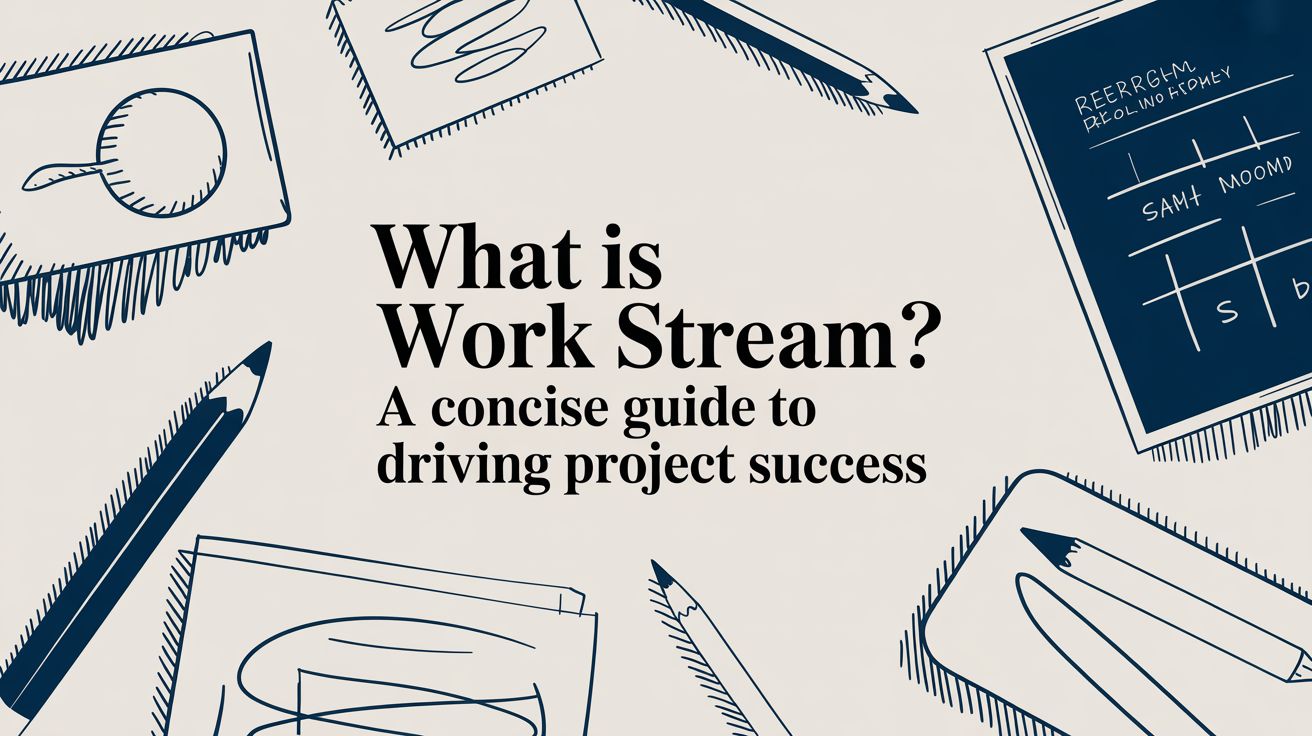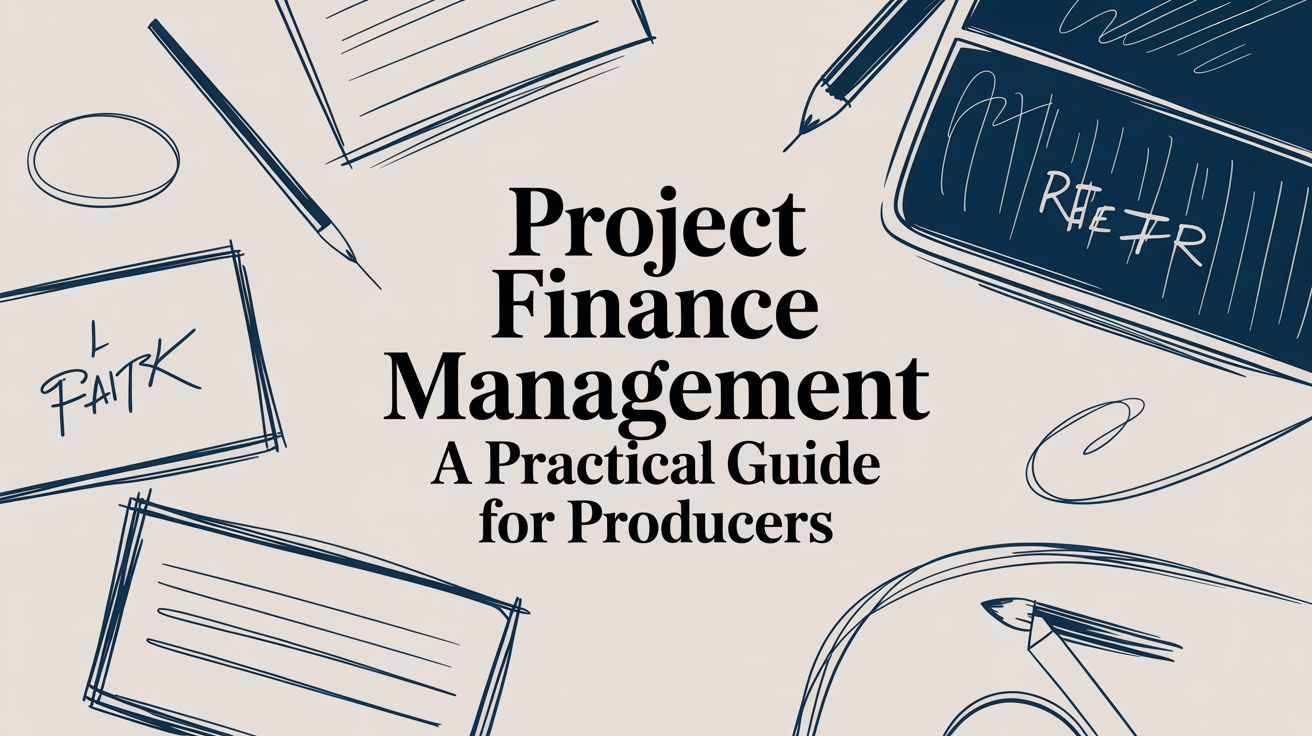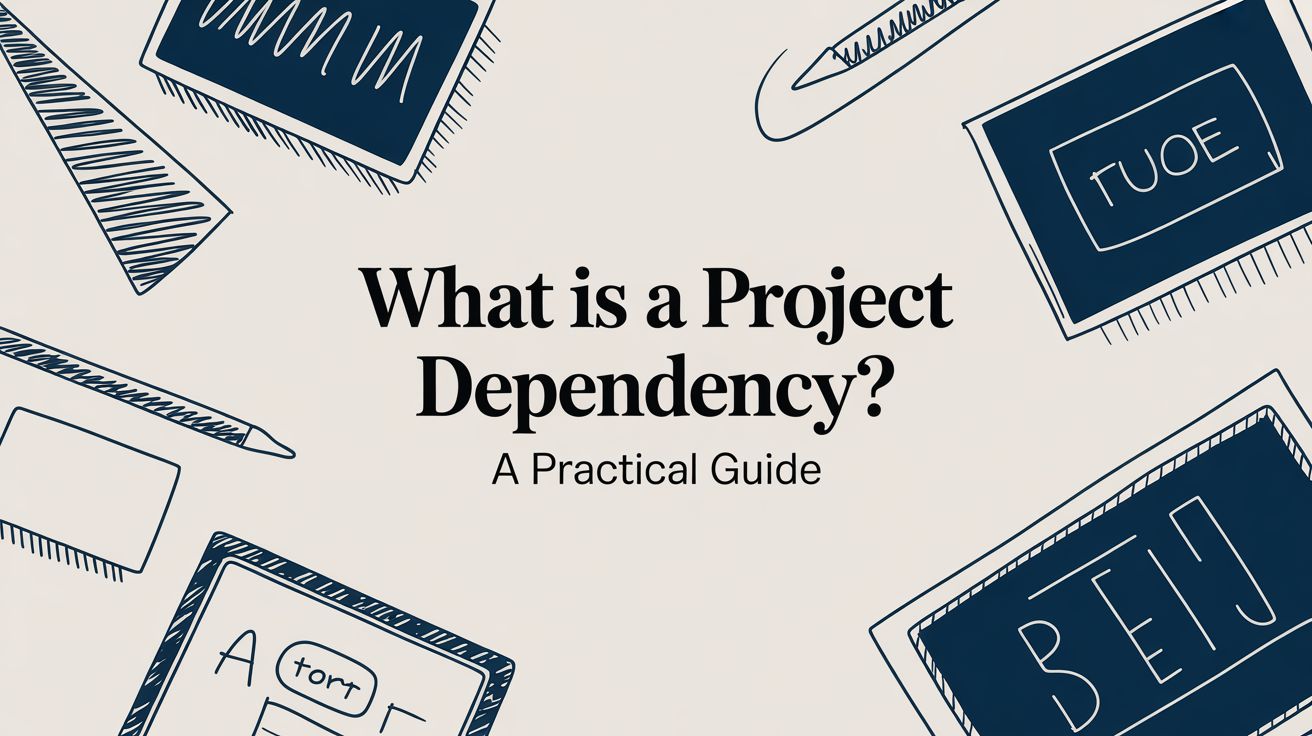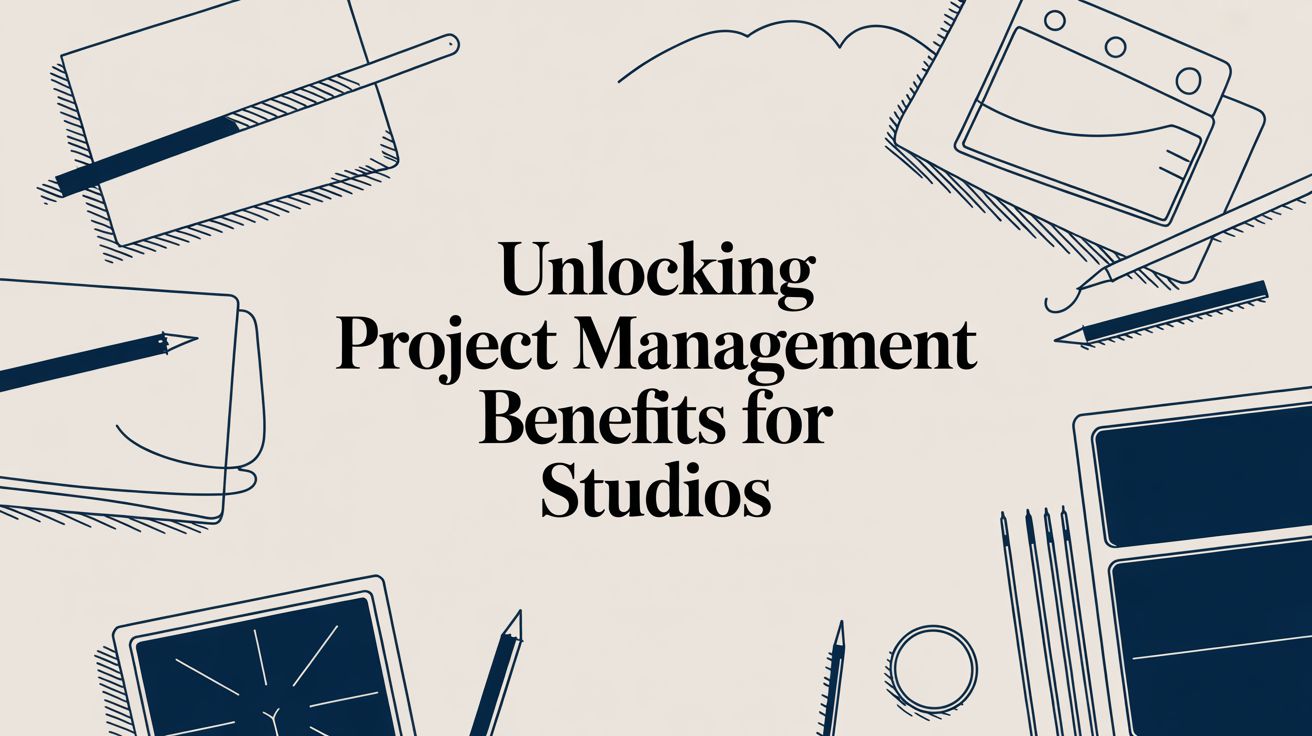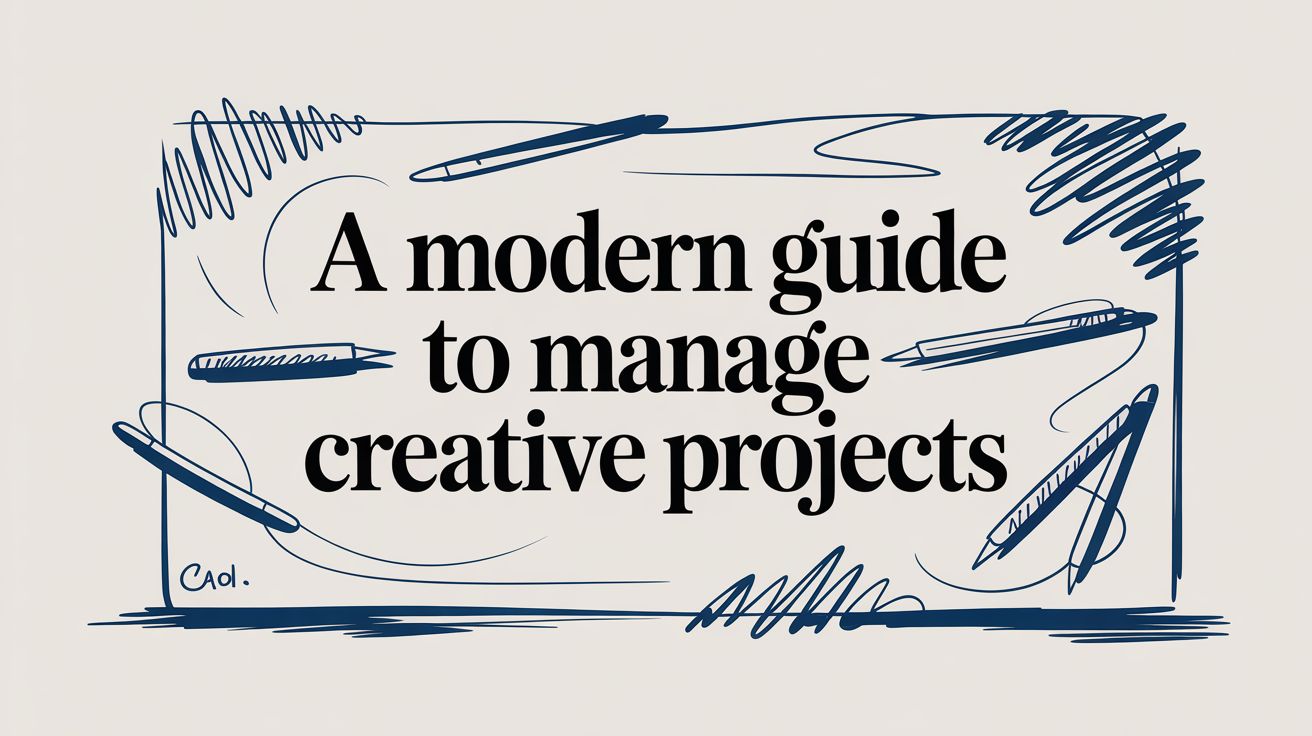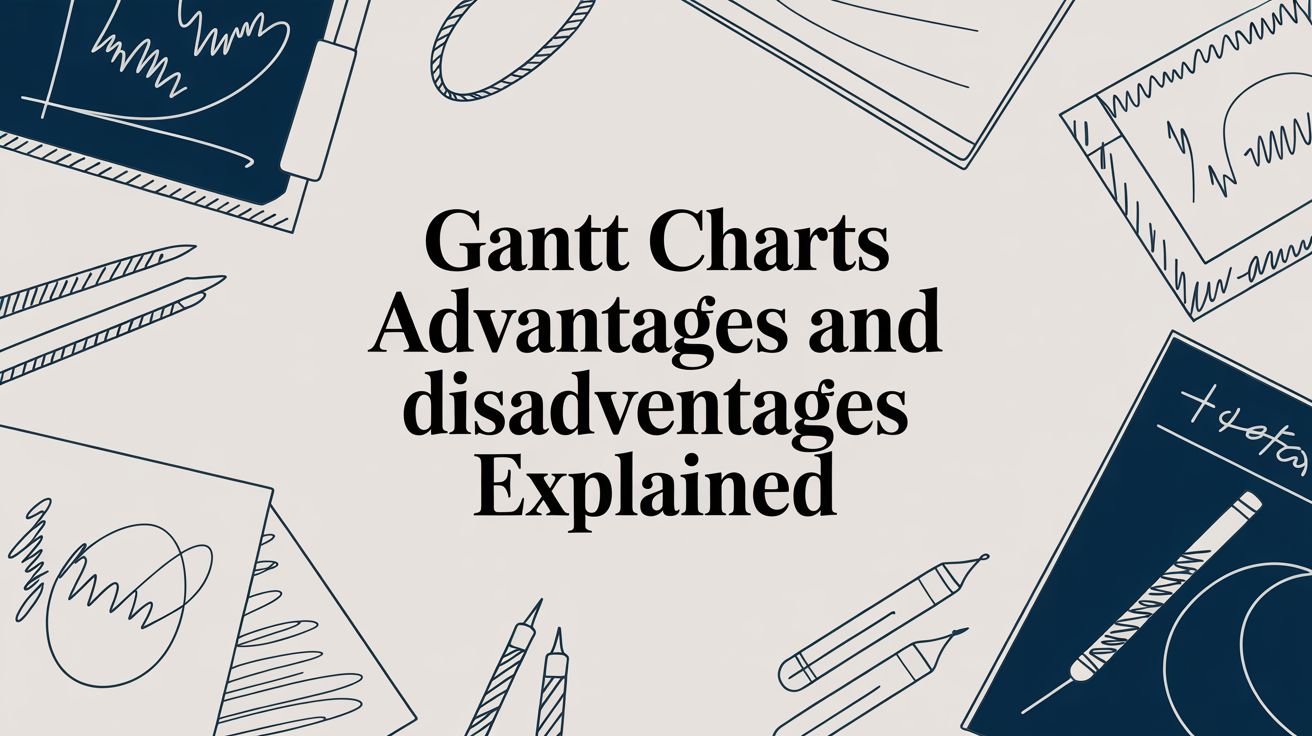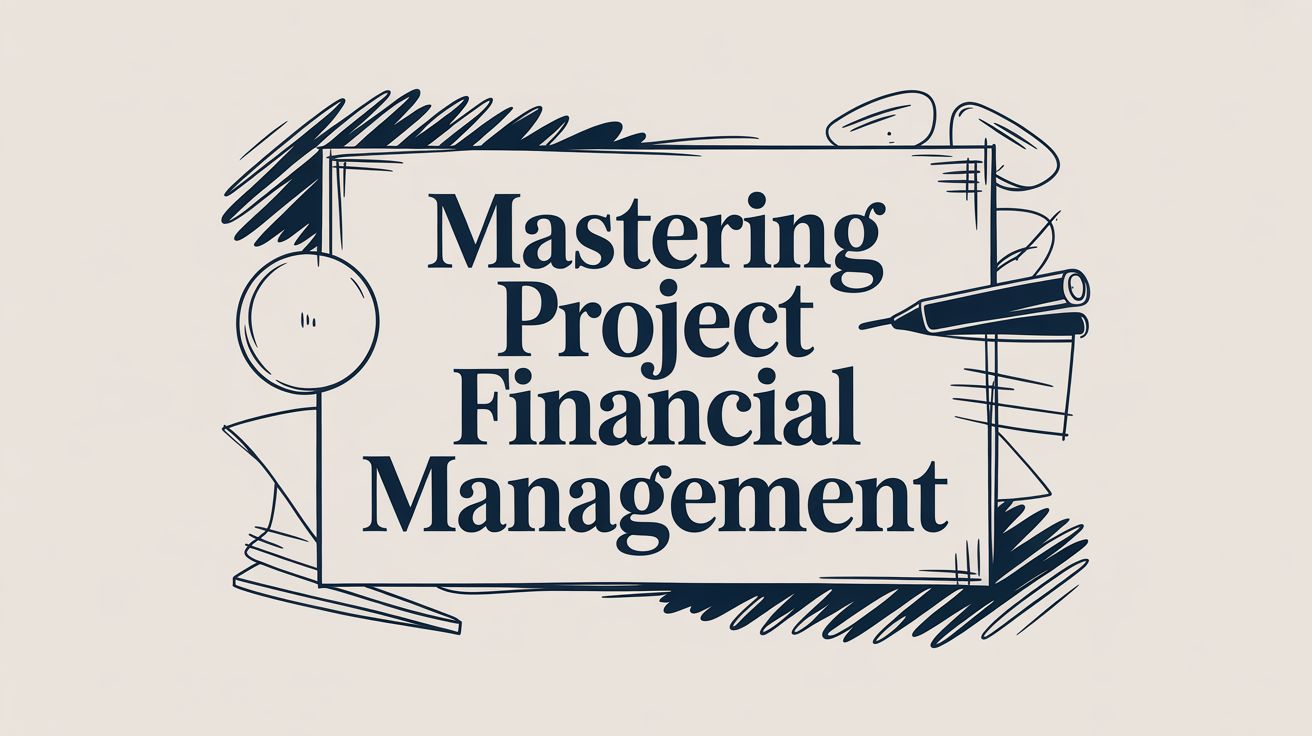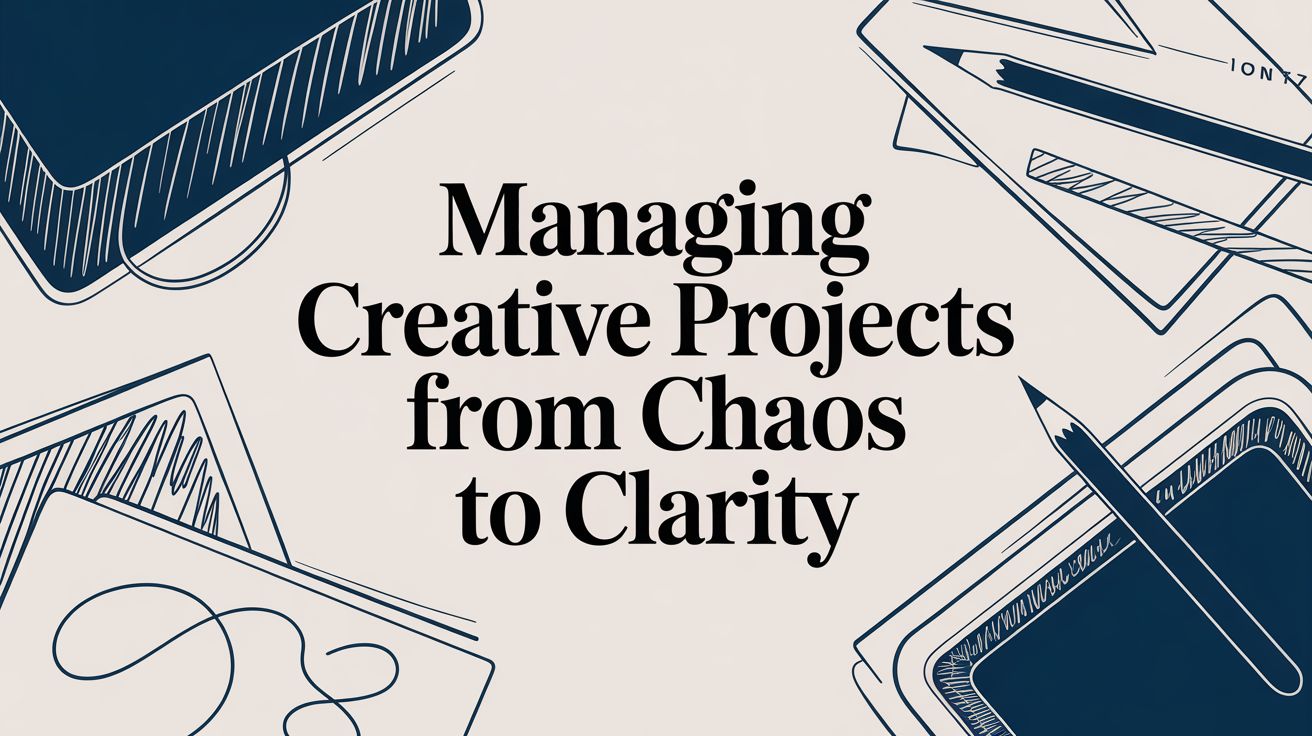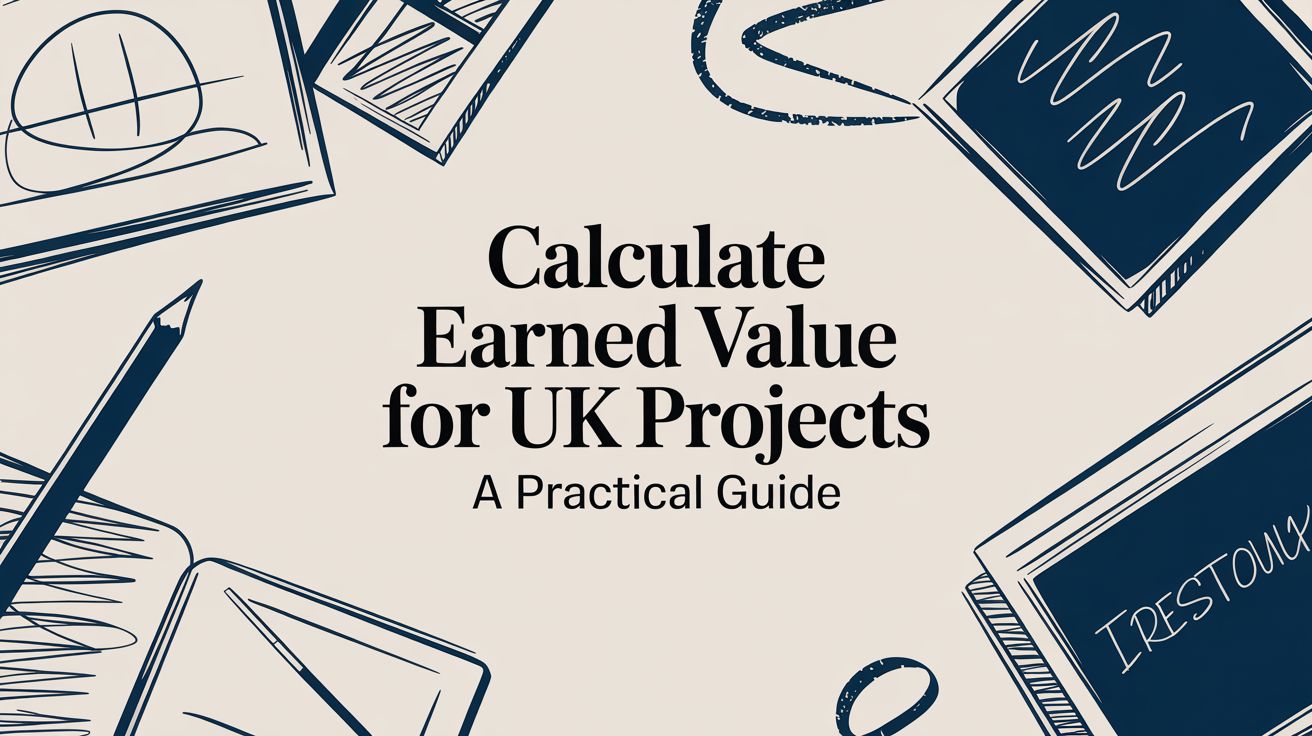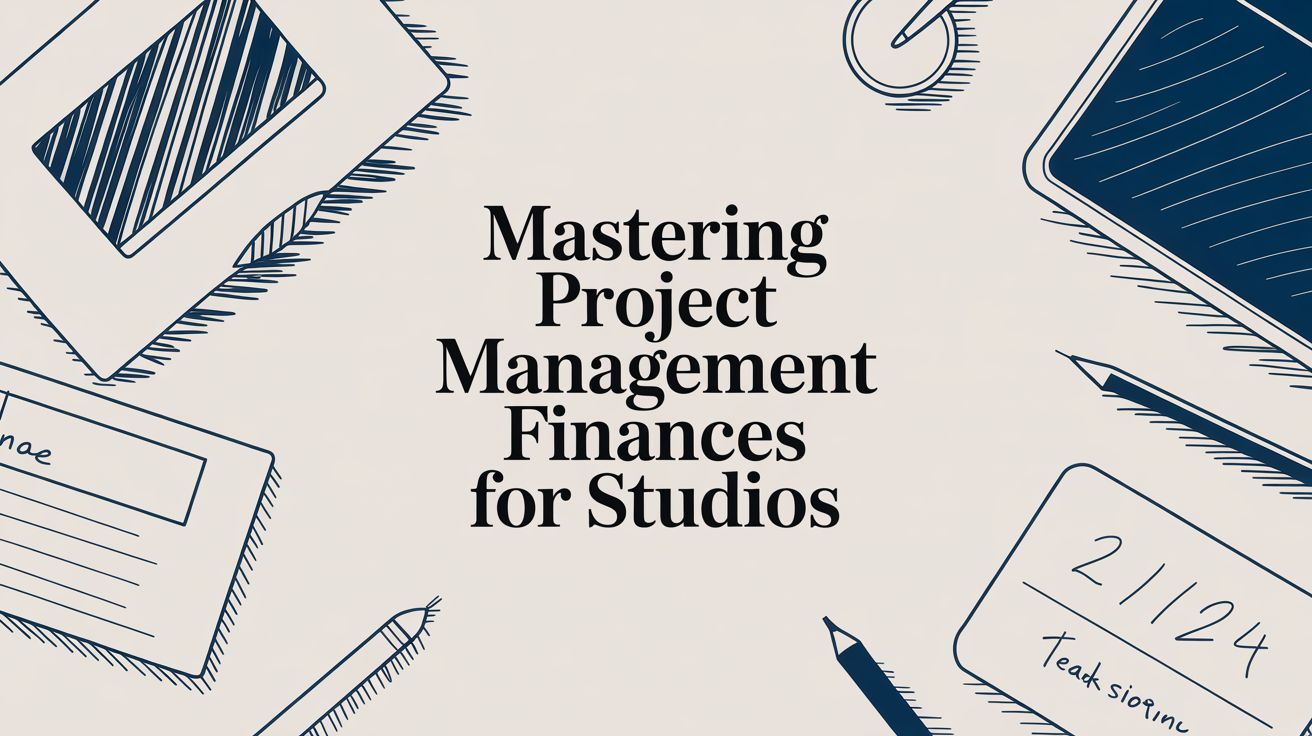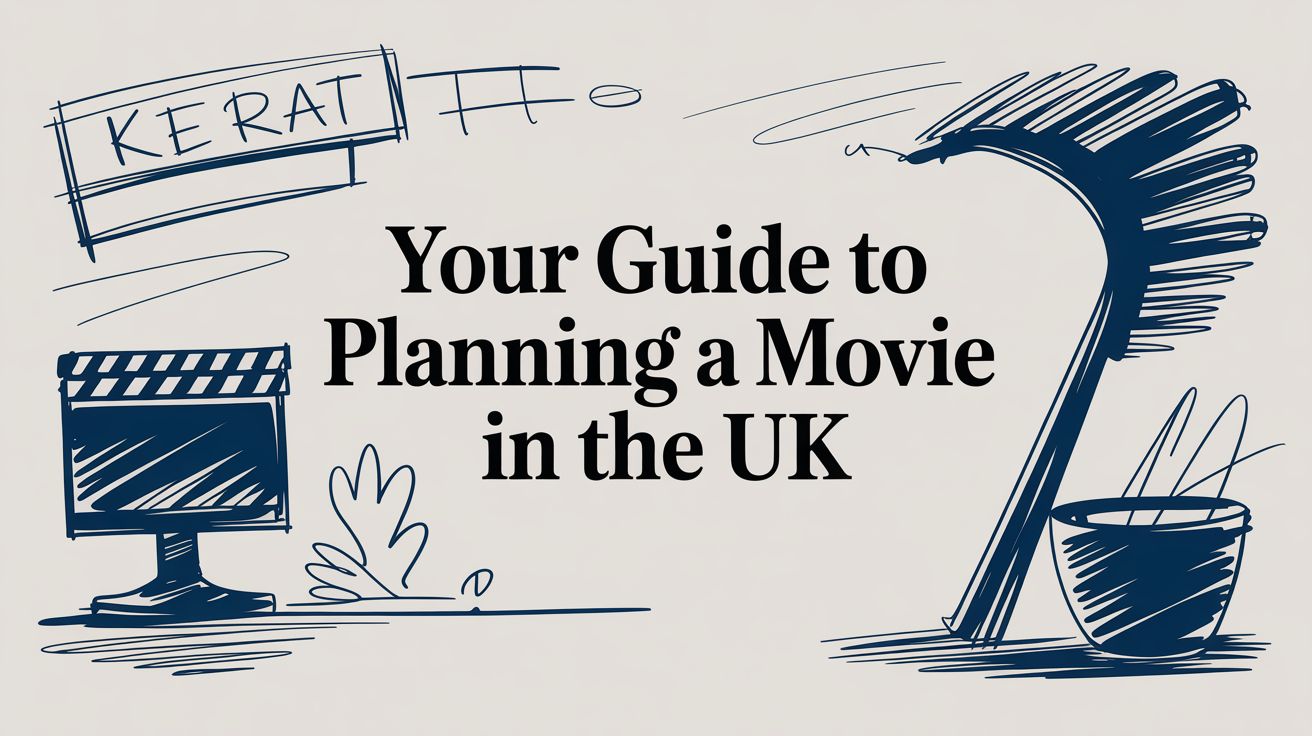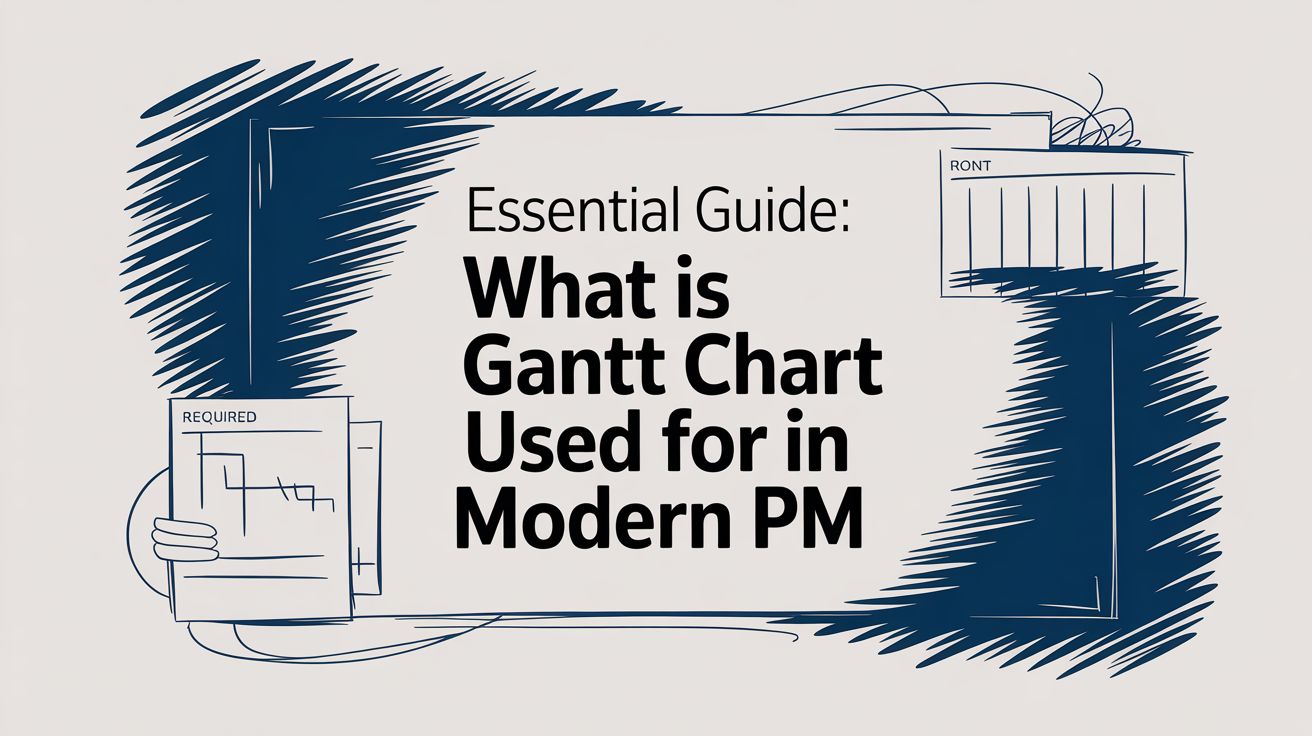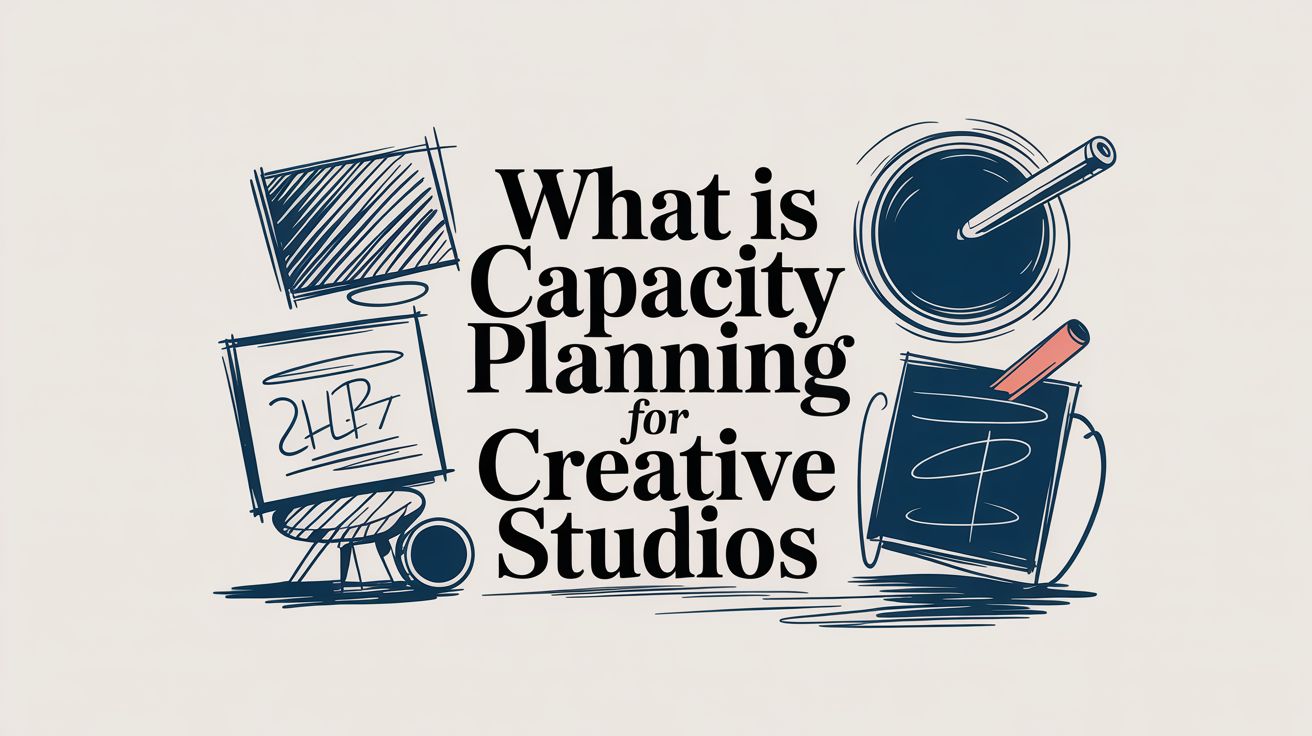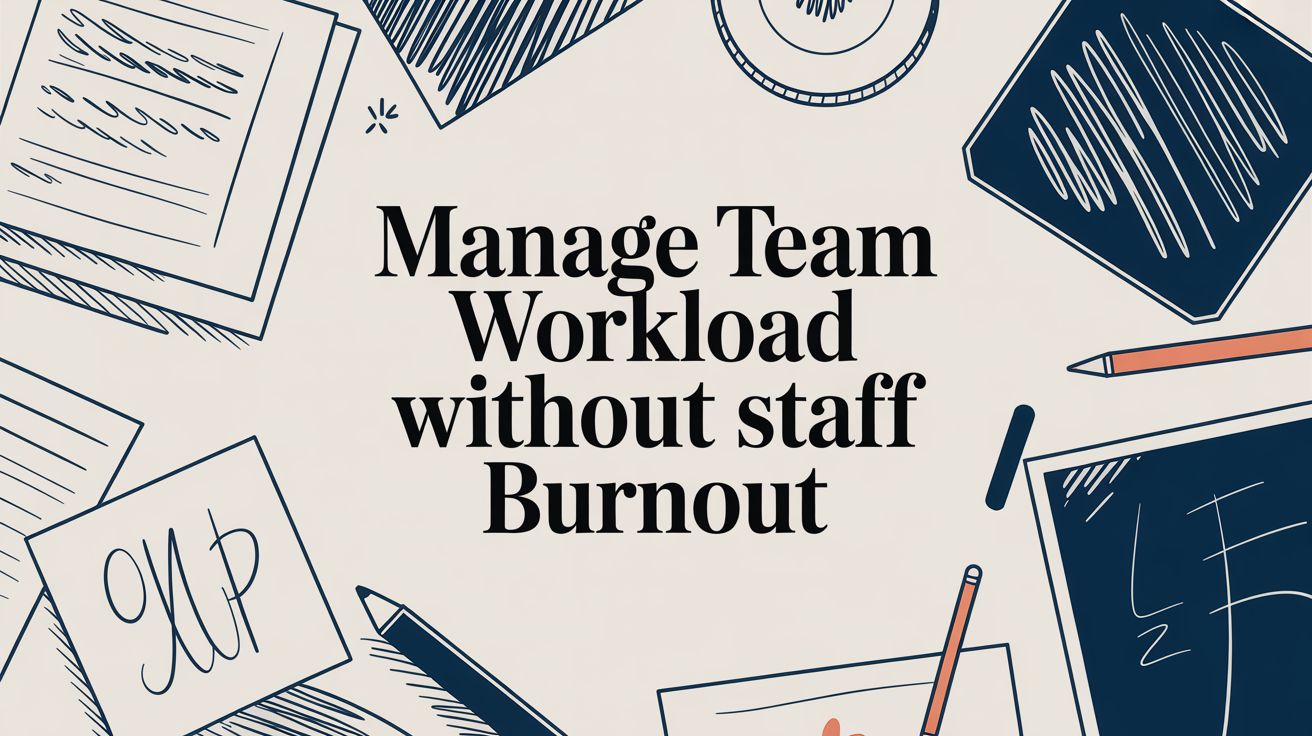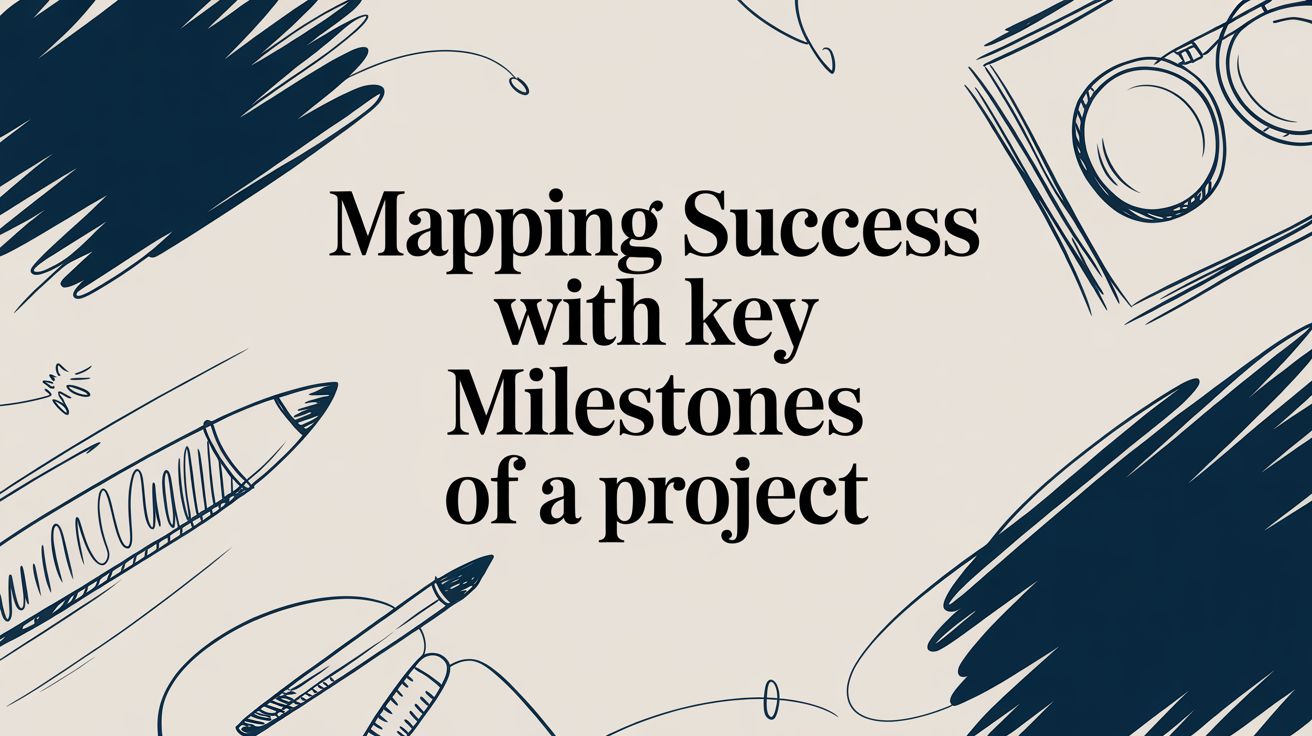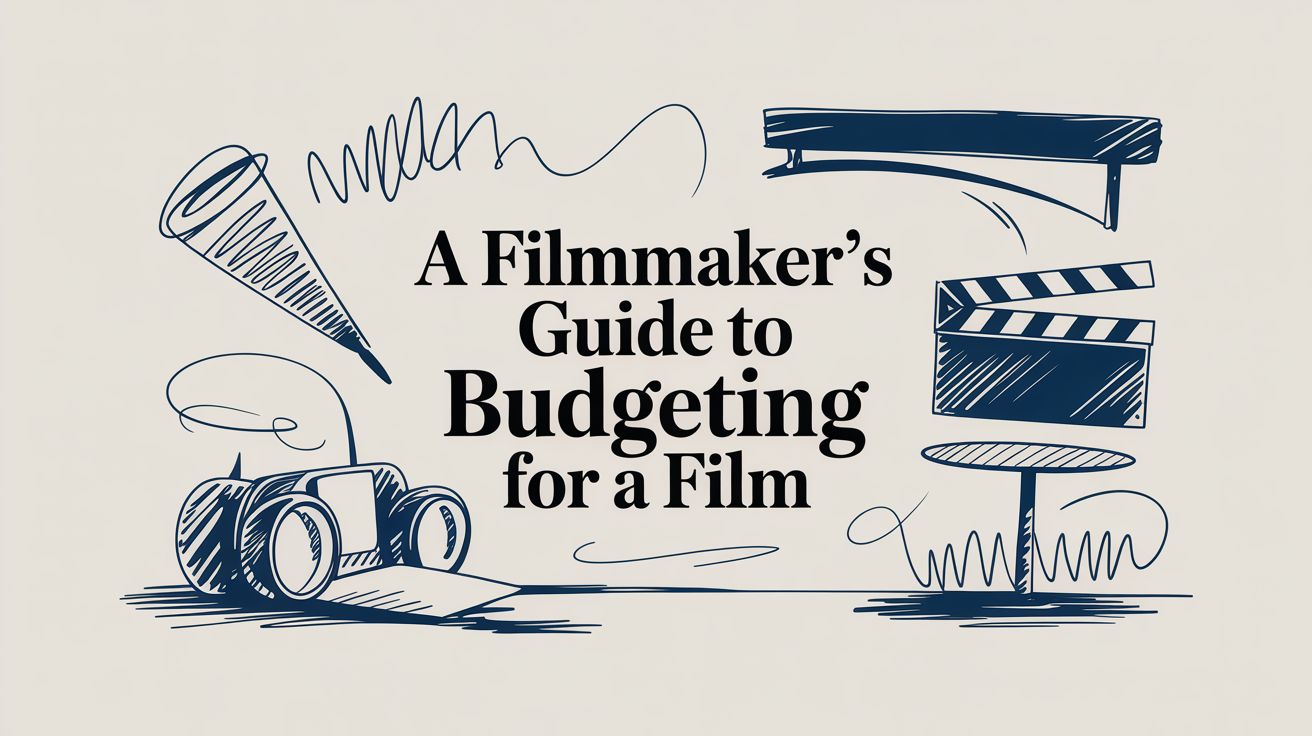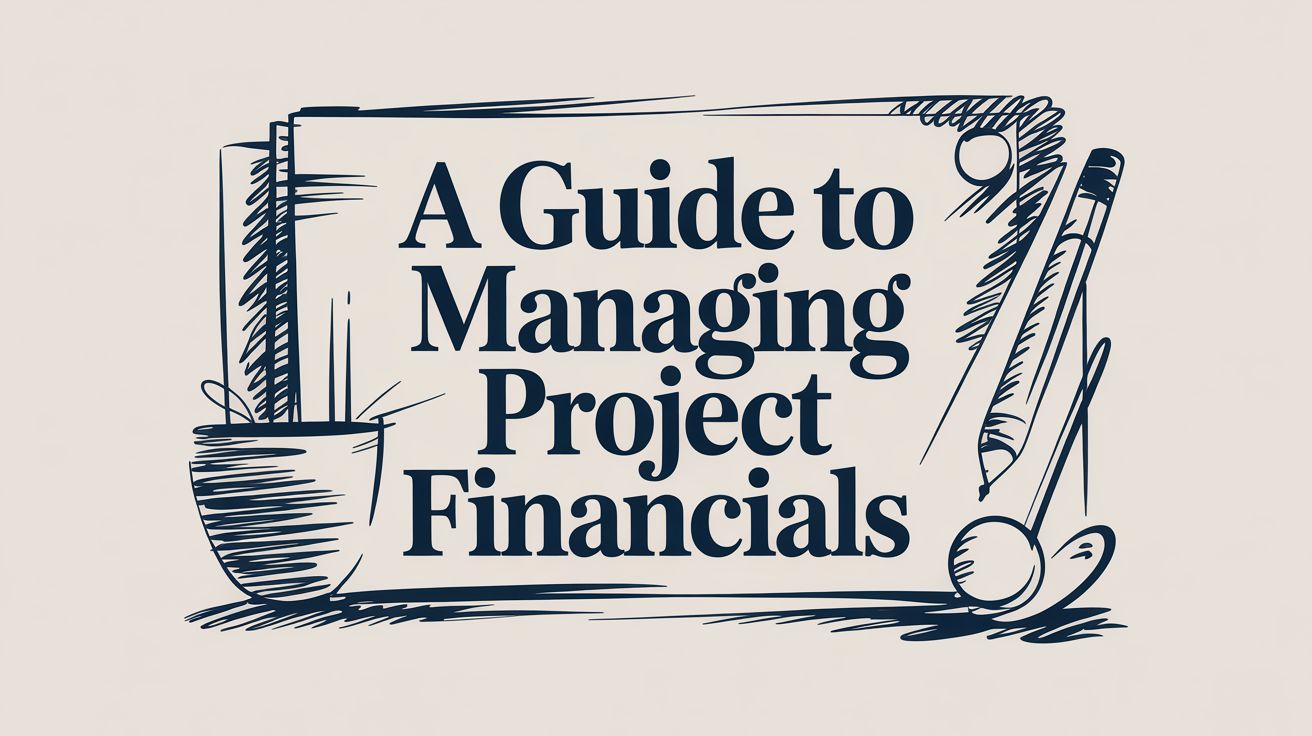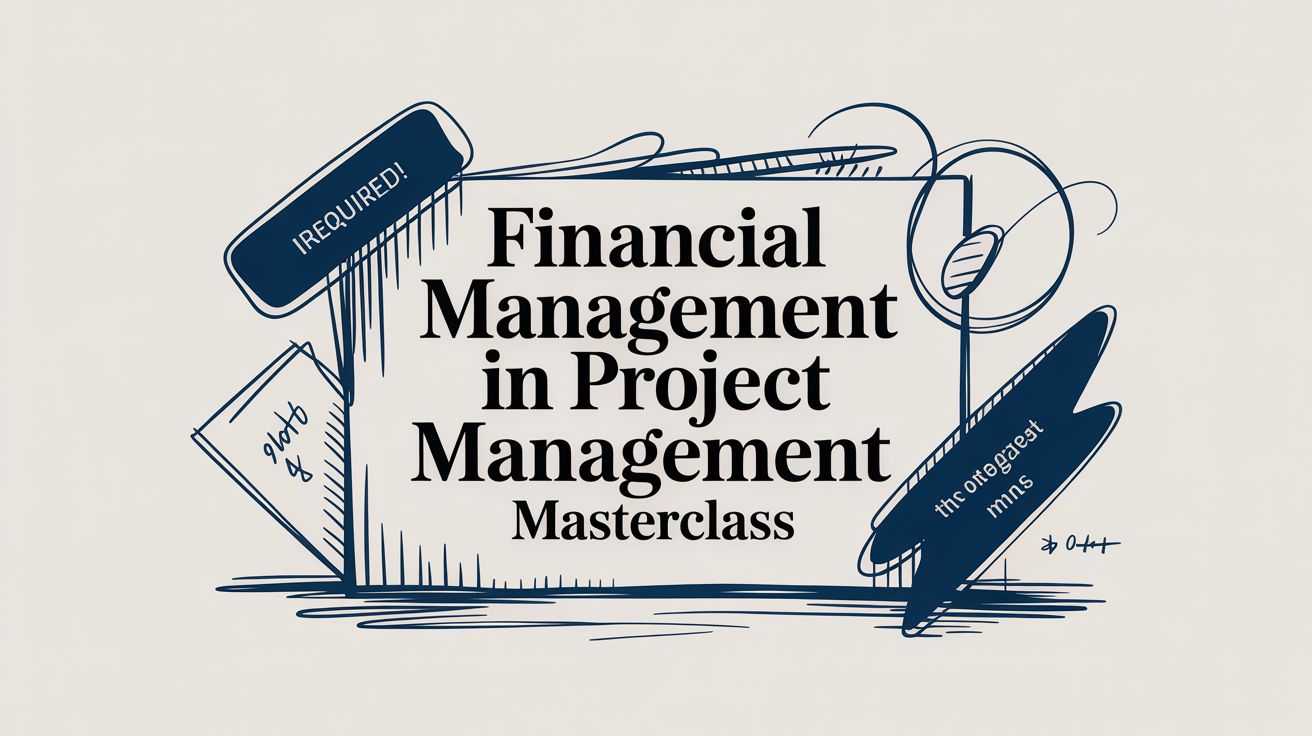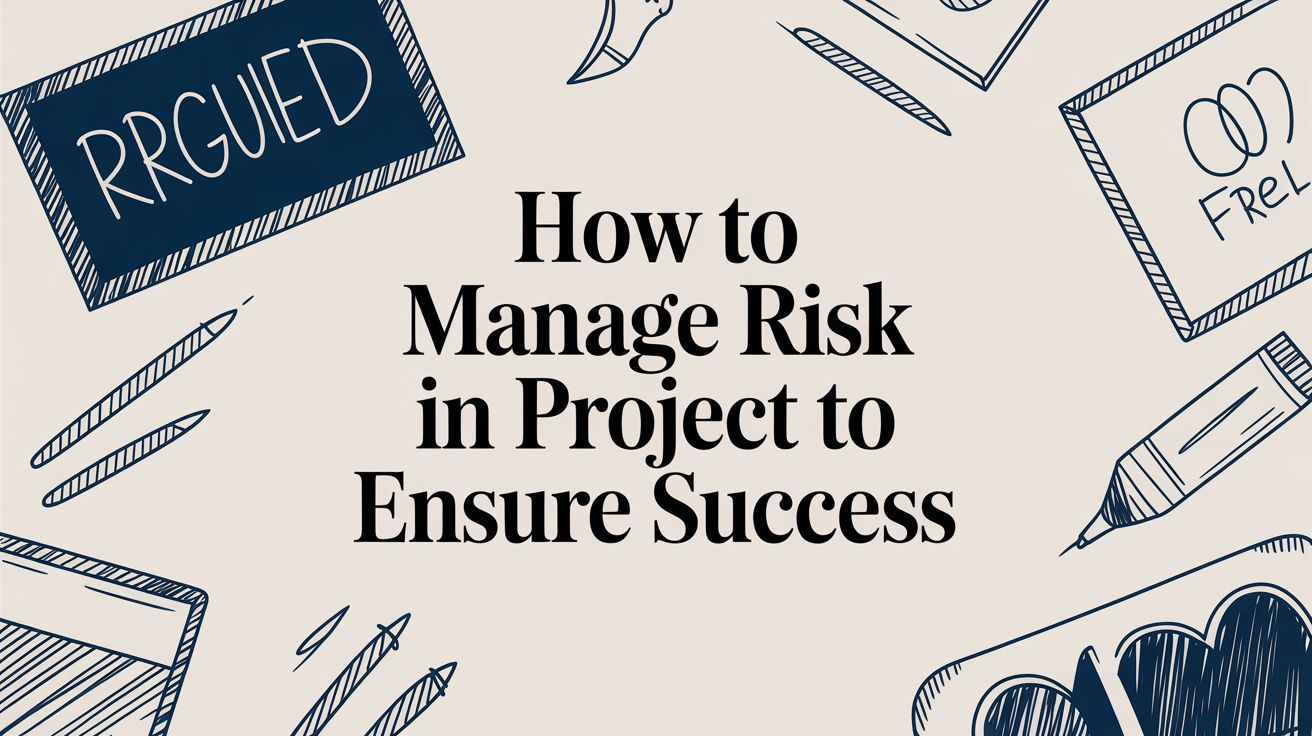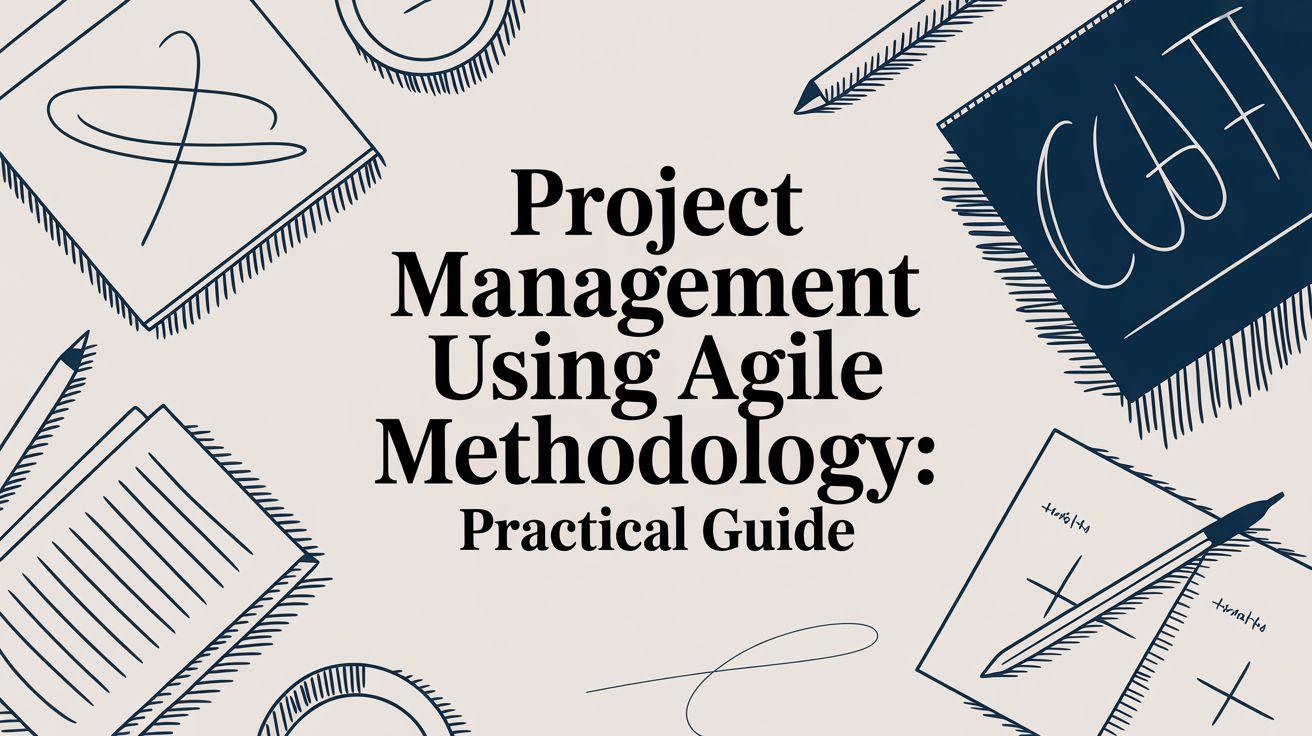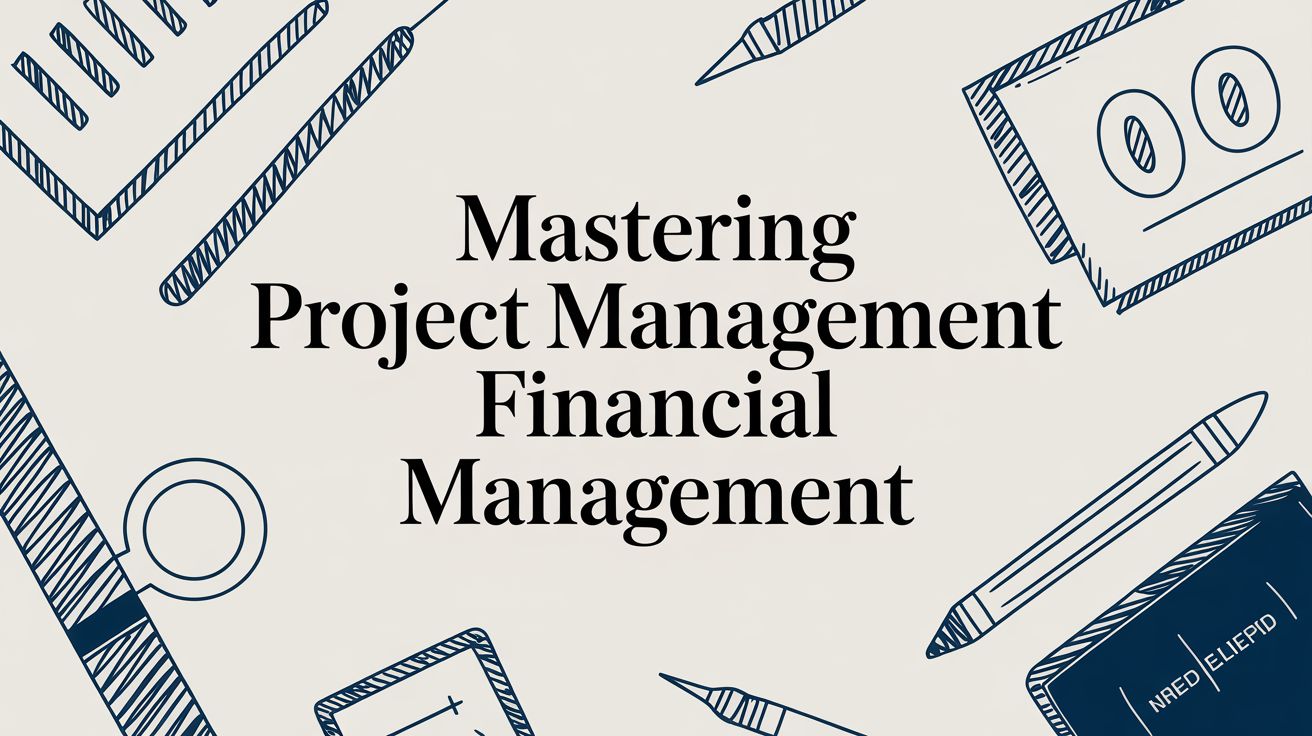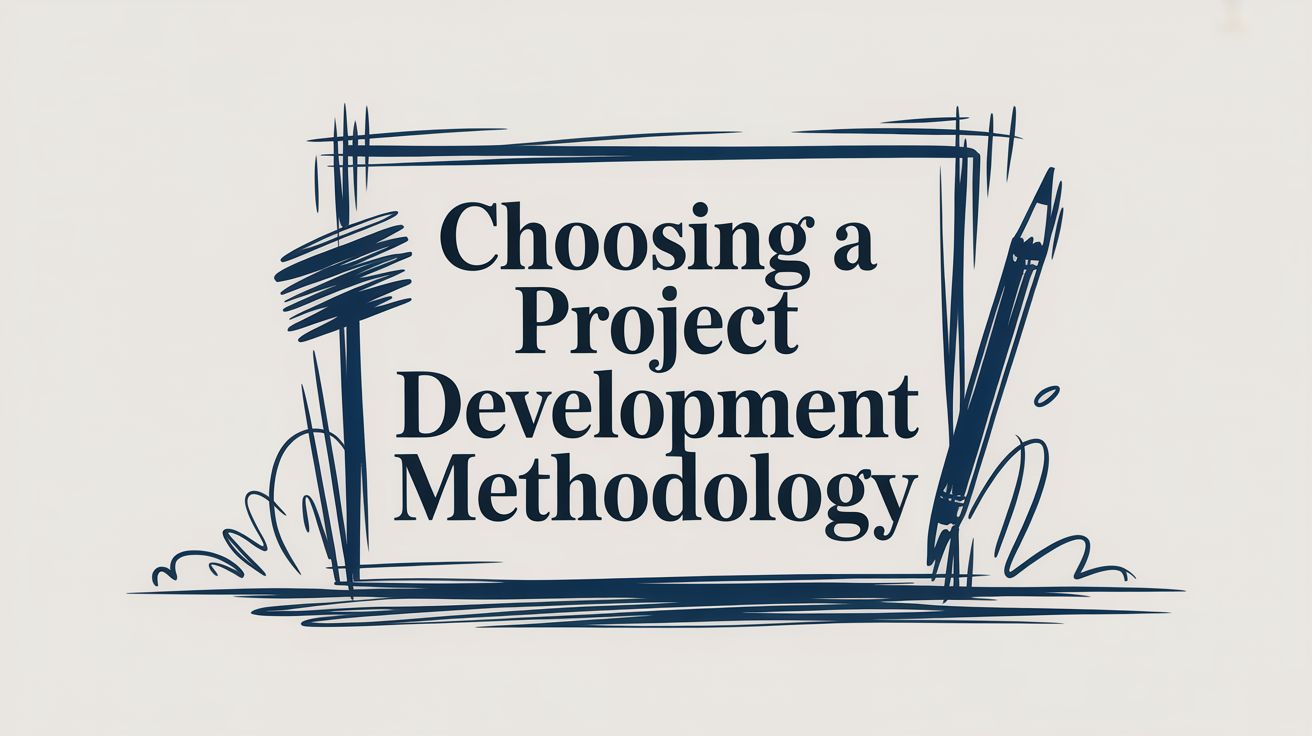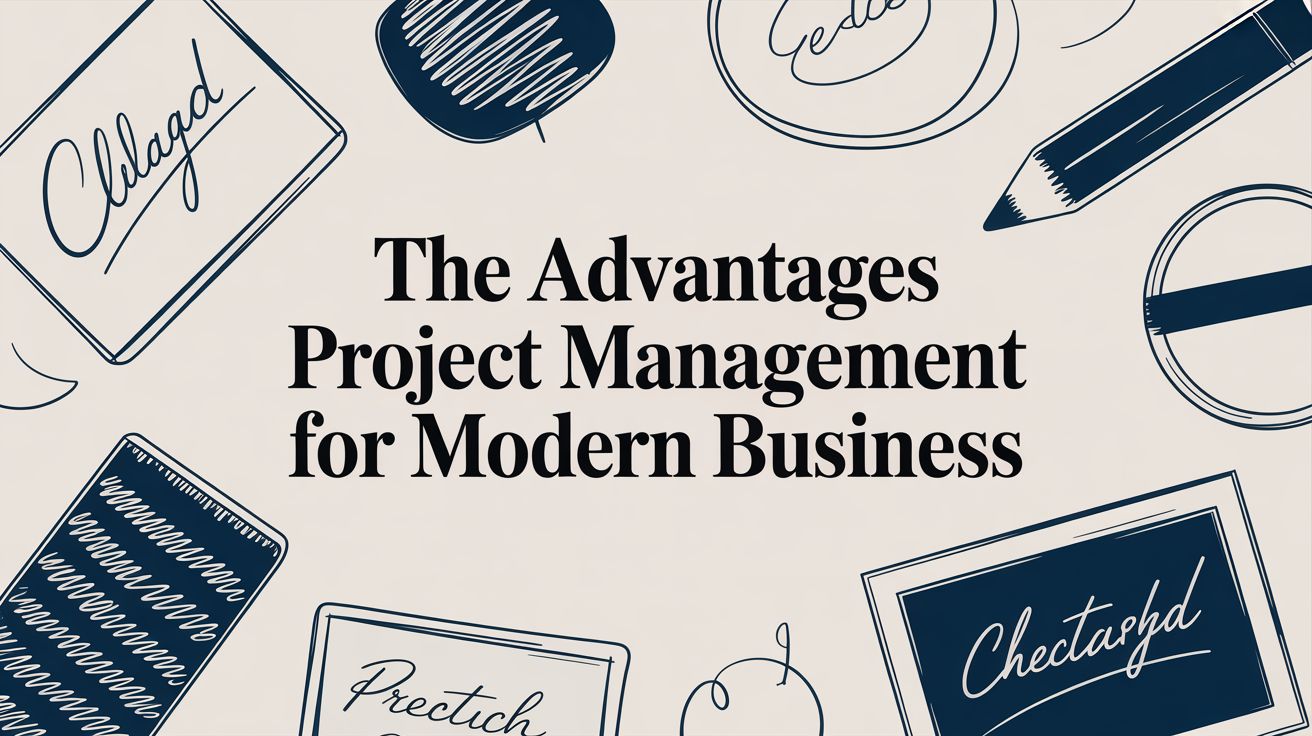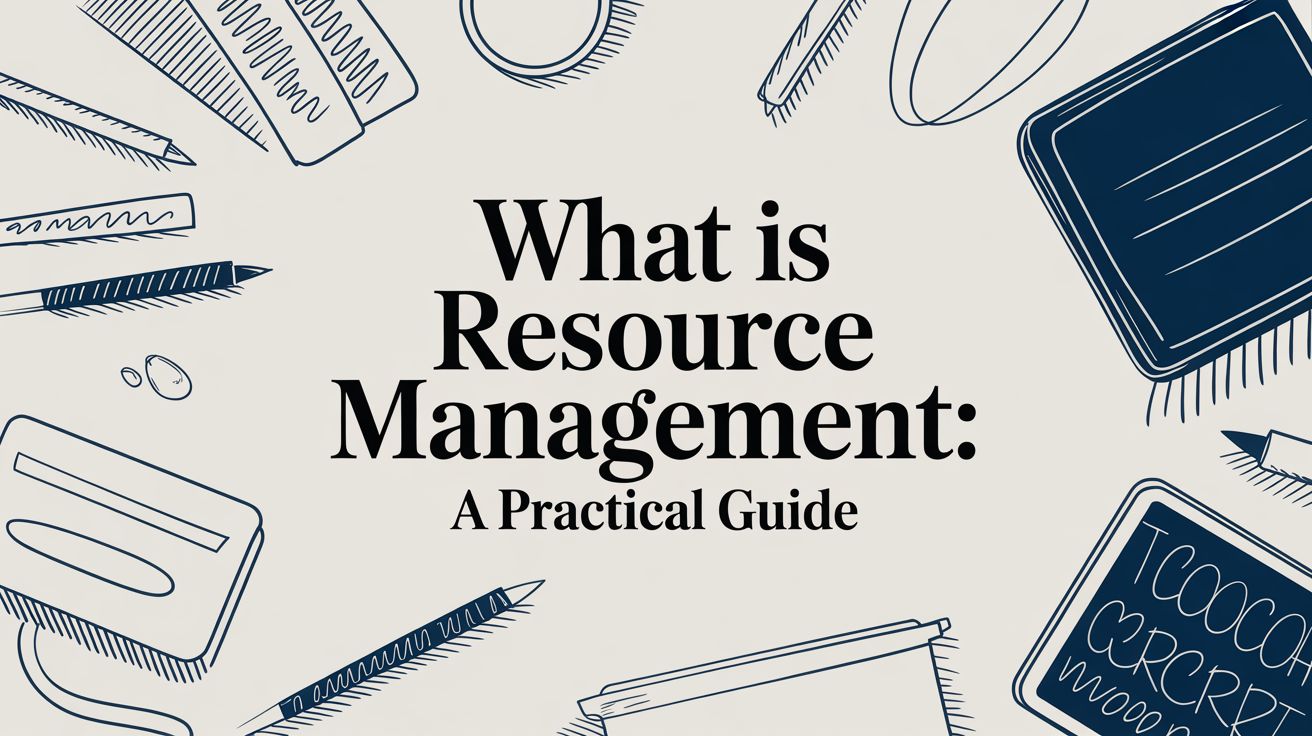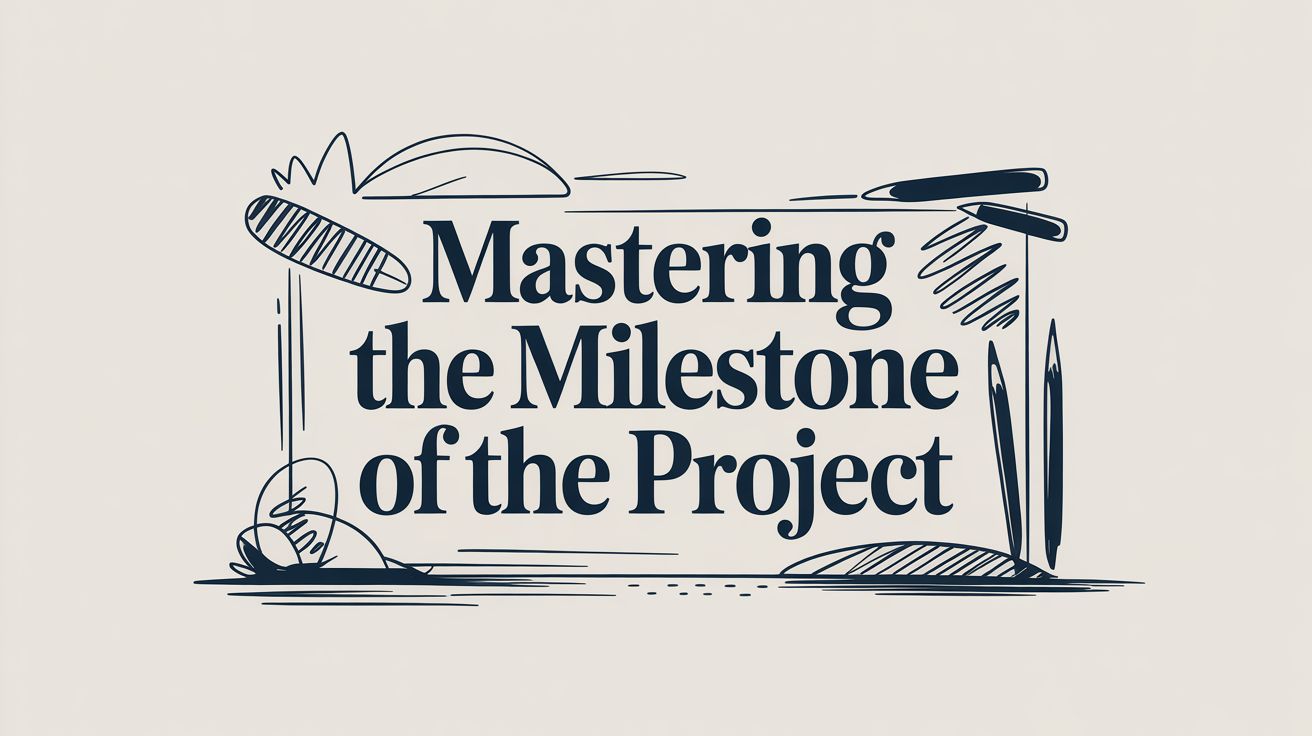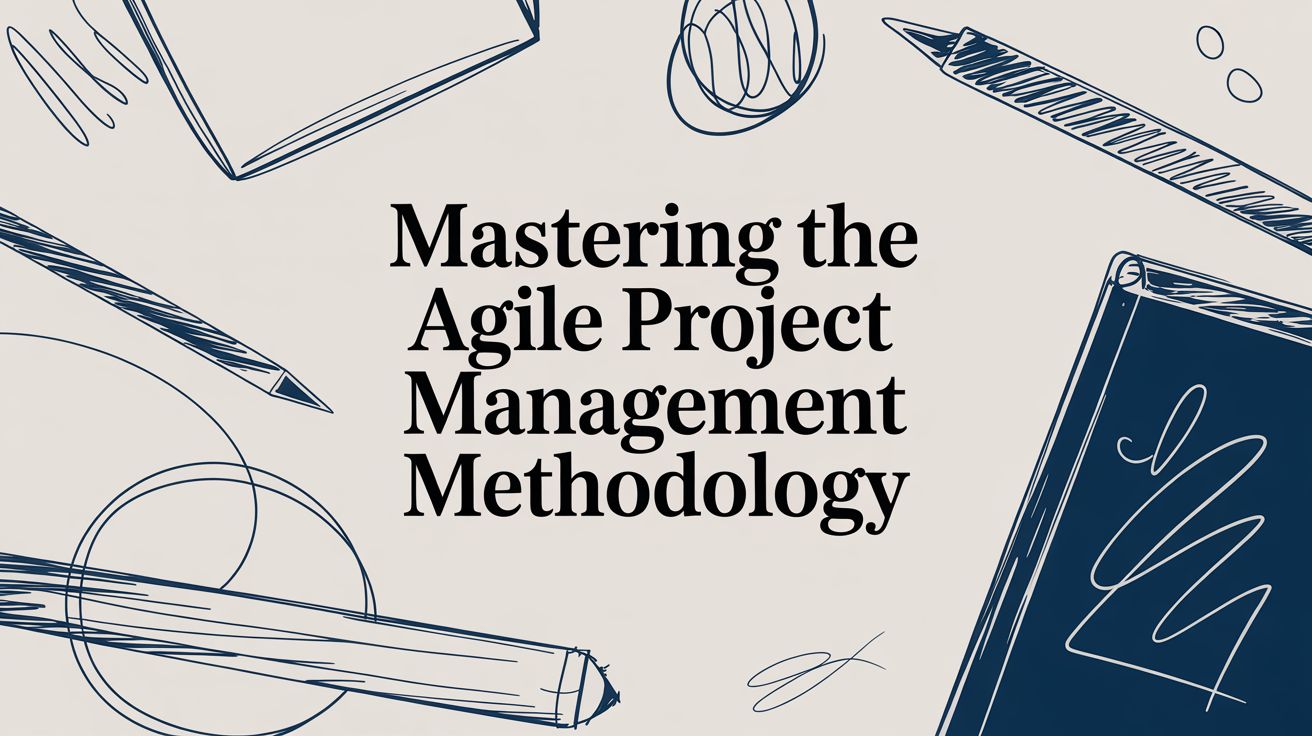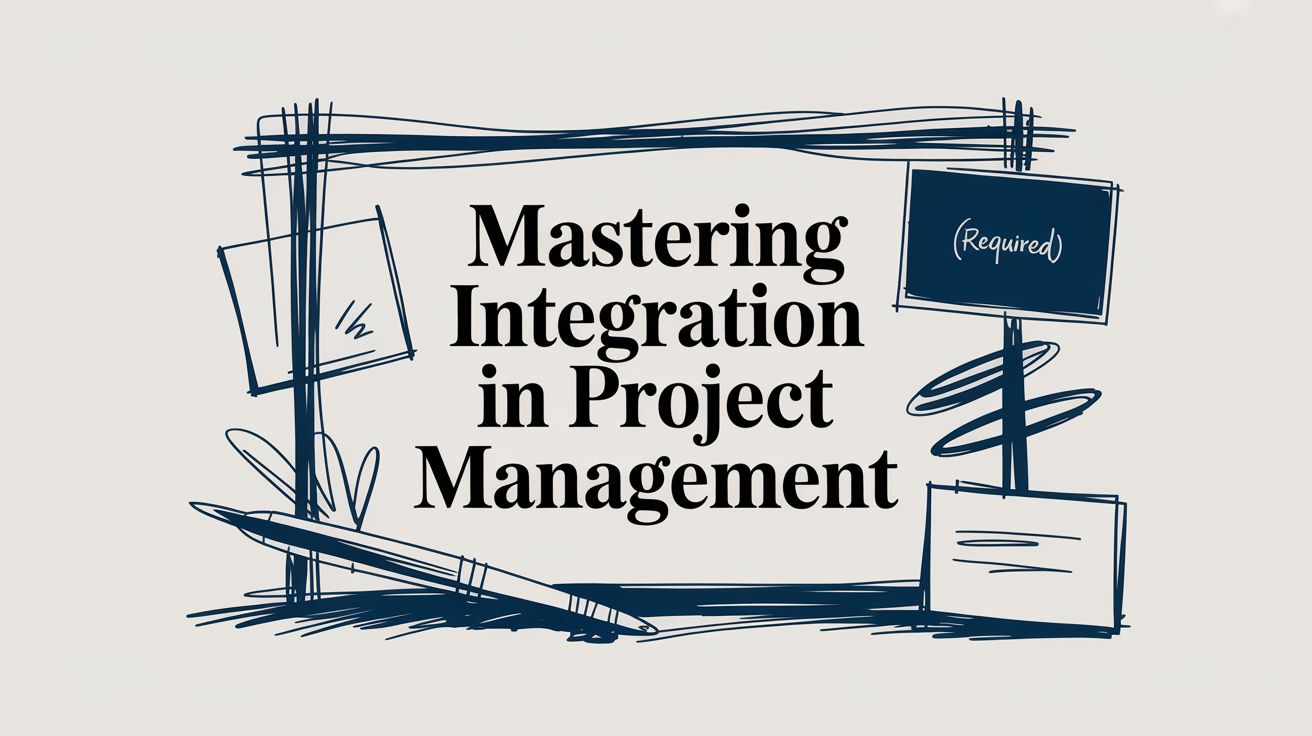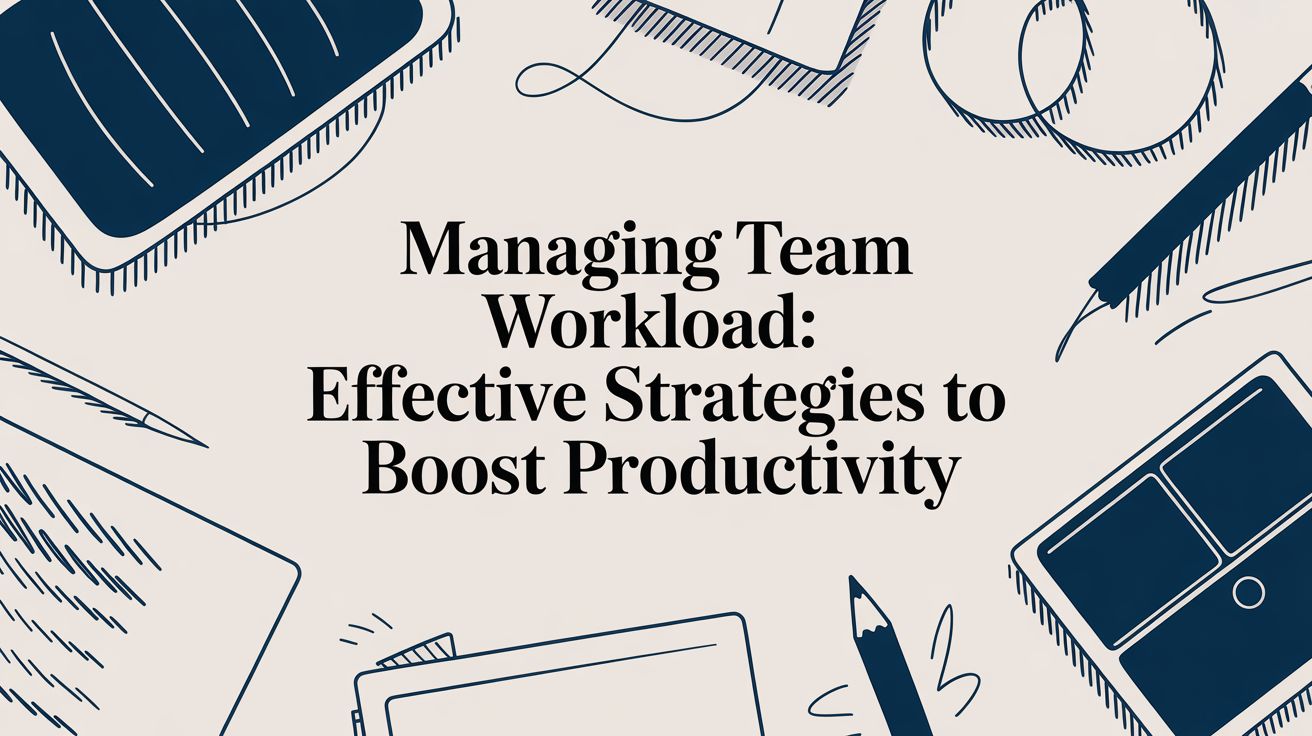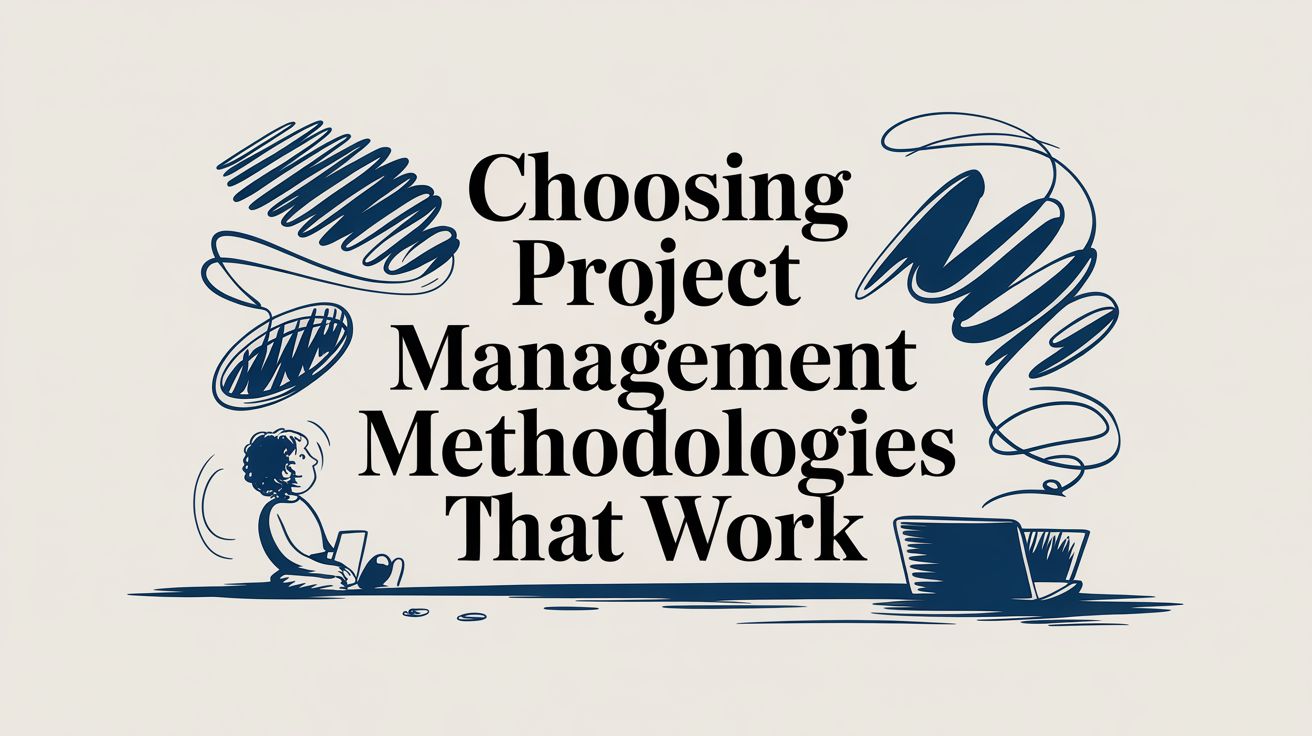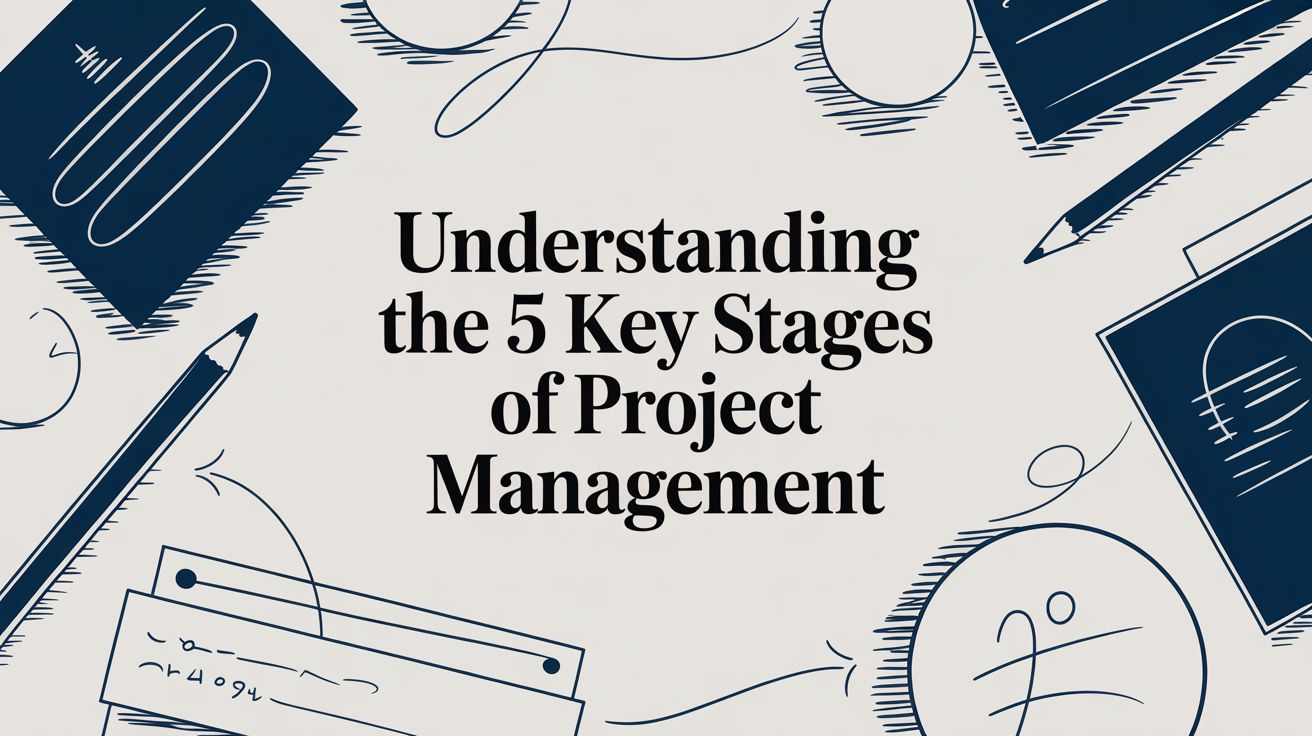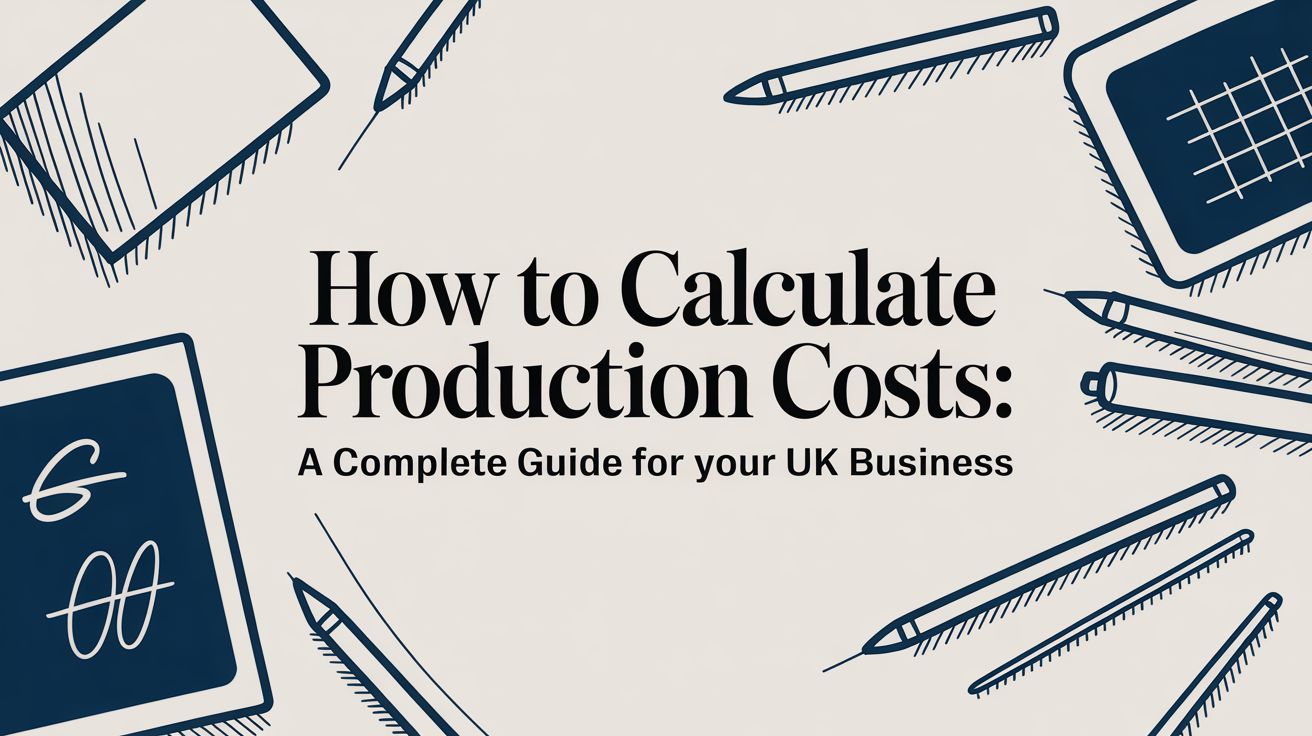Solid financial management of a project is about more than just numbers on a spreadsheet. It’s the entire process of planning, estimating, budgeting, and controlling costs to see a project through to completion without breaking the bank. Think of it as the framework that ensures every pound is accounted for, from the initial bright idea to the final handover.
Why Project Financial Management Matters
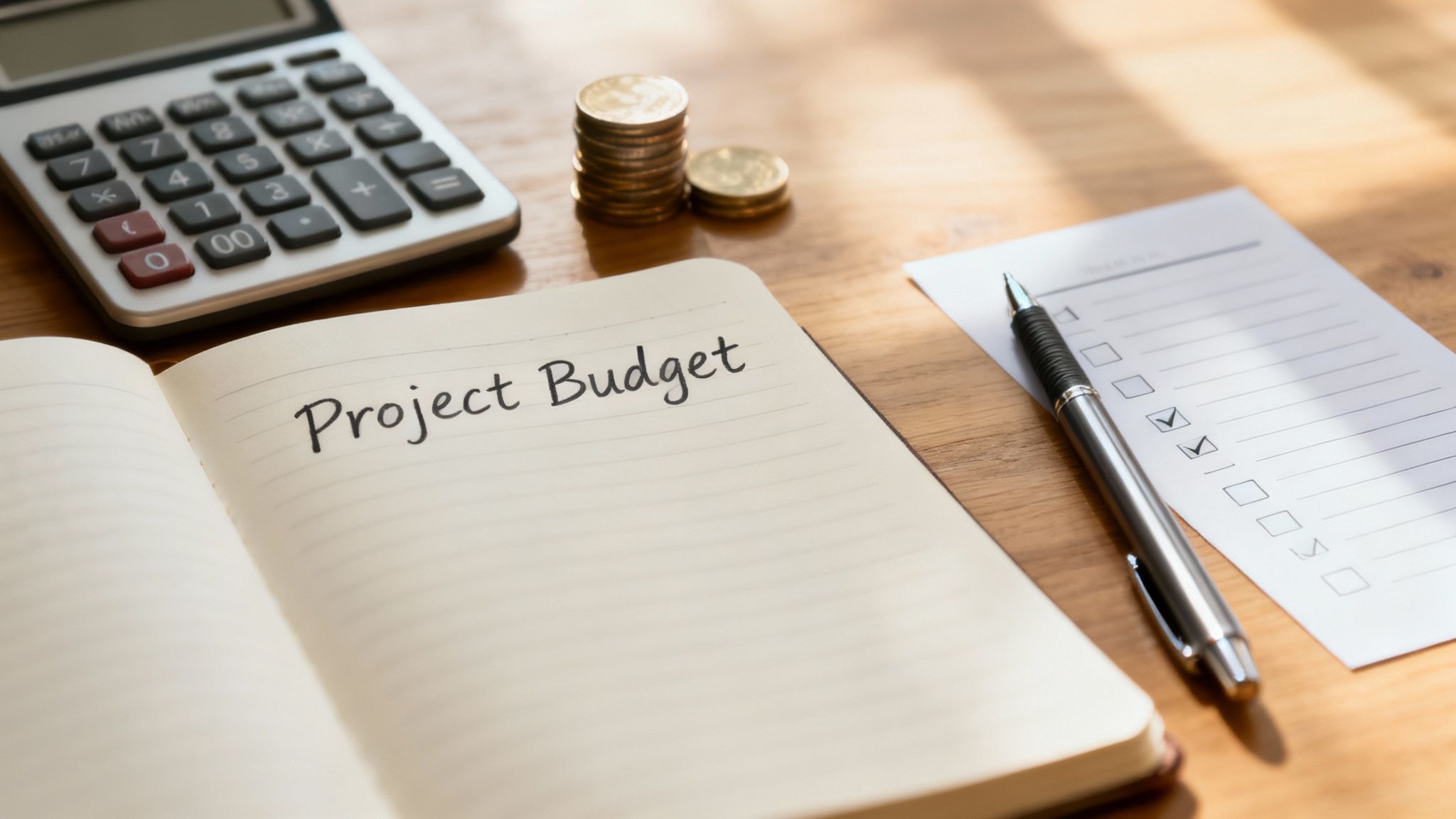
Let's be honest, proper financial oversight is the bedrock of any successful project. It’s not just a task for the accounts department; it's the core discipline that stops things from spiralling out of control, blowing the budget, or simply failing to deliver.
Without a clear financial roadmap, even the most brilliant concept is flying blind. When you master your project's finances, you're empowered to make smart decisions, get your resources where they need to be, and keep your stakeholders happy. This is where theory hits the real world. A solid grasp of financial planning is non-negotiable, and this guide to business financial planning is a great place to build up your knowledge base.
The Real-World Impact
Picture this: a post-production studio is launching a new VFX pipeline. The client starts making "small" requests here and there—a classic case of scope creep, the silent budget killer. Without meticulous financial tracking, these tiny additions pile up, pushing labour and software costs way past the original quote.
A well-managed project, on the other hand, would have a change control process in place. Every new request would be evaluated for its financial impact, protecting both the budget and the deadline.
This is exactly why getting the fundamentals right is so crucial. It all boils down to a few key elements:
- Cost Estimation: Making an educated guess on the financial resources you'll need.
- Budgeting: Creating a detailed, approved spending plan.
- Cost Control: Actively keeping an eye on spending and managing any deviations.
- Resource Allocation: Making sure your team and tools are being used efficiently.
The goal isn't just to track where the money goes; it's to create value. Strong financial management allows you to pivot when needed, jump on opportunities, and ultimately deliver a result that meets the business's goals.
At the end of the day, financial management is woven into every part of project delivery, including how you manage your team and equipment. To get a better handle on how it all connects, you might want to read our article on what is resource management and see how it directly impacts your budget.
Building a Realistic and Defensible Project Budget
Creating a budget that'll stand up to scrutiny is more art than science, but it’s an art you can master. It’s not about plucking numbers from thin air; it’s a disciplined process that weaves together hard data, hard-won experience, and a bit of forward-thinking. To build a plan that your stakeholders can actually get behind, you need to move beyond simple guesswork.
A solid budget starts with a solid estimate. For those early-stage pitches or high-level plans, analogous estimating is your best friend. You’re essentially looking at similar past projects to come up with a ballpark figure. For example, if a previous VFX project with 50 shots cost you £100,000, you can reasonably estimate that a new, more complex project with 75 shots will land somewhere around £150,000. It's a quick, back-of-the-napkin way to get the conversation started.
Getting Granular with Your Estimates
Once the project scope starts taking shape, it’s time to dig deeper. Bottom-up estimating is the gold standard when you need real accuracy. This is where you break the entire project down into the smallest possible tasks and put a price tag on each one.
Think about a software development project. Instead of one big guess, you'd estimate the hours and resources for every single piece of the puzzle:
- Developing the user authentication feature.
- Building out the payment gateway integration.
- Running all the user acceptance testing.
When you add up all those small costs, you get a total that’s not just detailed—it’s defensible. This process also forces you to think through every component, which dramatically lowers the risk of some nasty hidden cost popping up later. It’s also crucial to look past the initial spend and think about the long-term financial picture by focusing on reducing total cost of ownership.
Planning for the Unexpected
Let's be honest: no project goes exactly to plan. That’s why your budget needs a couple of financial cushions built right in.
First up is the contingency reserve. This is your fund for the "known unknowns"—risks you've actually identified during planning. For a construction project, you might set aside a contingency for a notoriously unreliable supplier or the inevitable delays from a rainy season.
A contingency reserve isn't a slush fund. It's a calculated amount tied to specific, identified risks. When a risk materialises, you have a pre-approved budget to handle it without derailing the entire project.
Then you have the management reserve. This is for the "unknown unknowns," those completely out-of-the-blue surprises that nobody could have seen coming. This reserve is usually controlled by senior management and acts as a safety net for major, unforeseen events. How well you handle these reserves is a huge part of financial stability. If you want to dive deeper, we've got a detailed guide on budgeting and controlling that breaks it all down.
Even massive government initiatives depend on this kind of disciplined approach. Take Building Digital UK (BDUK), which handles huge digital infrastructure projects. In one fiscal year, their spending on key resources came in 8.4% under their supplementary budget. That’s a testament to how careful planning and tight control can prevent overspending, even on complex, nationwide projects. That’s the level of control every project manager should be aiming for.
Tracking and Controlling Project Costs in Real-Time
Once your project kicks off, the game shifts from planning to active monitoring. A budget is a great starting point, but it's only as good as your ability to track against it. Without real-time tracking, you’re essentially flying blind, and you won’t spot a problem until it’s already spiralled out of control.
Effective cost control isn’t about pinching every penny. It's about getting into a rhythm of regular review and quick response. This means having systems in place that give you a clear, current snapshot of your project's financial health. For smaller gigs, a well-organised spreadsheet might do the trick. But for bigger, more complex initiatives, you’ll want to lean on dedicated project management software.
The trick is to make tracking a natural part of your daily workflow, not some chore you put off until month-end. For instance, if you're running a VFX studio, your artists' timesheets should feed directly into your project's cost tracker. This way, labour costs—often your biggest expense—are captured as they happen, giving you a truly accurate, live view of your spending.
Using Earned Value Management to Stay on Track
To really get a grip on your financial performance, you need to look beyond a simple budget vs. actuals comparison. This is where Earned Value Management (EVM) comes in. It’s a seriously powerful technique that links your budget to your project timeline, giving you a much richer picture of your progress.
At its heart, EVM uses a handful of key metrics to tell you if you're getting the value you expected for the money you've spent so far. One of the most critical is the Cost Performance Index (CPI).
CPI = Earned Value (EV) / Actual Cost (AC)
If your CPI is greater than 1, you’re under budget. If it's less than 1, you're over budget. A CPI of exactly 1 means you're perfectly on track. It’s a straightforward but incredibly insightful health check for your project's finances.
Let’s say you've budgeted £20,000 to complete the first half of a sound mixing project. By the deadline, you’ve actually spent £25,000 but only managed to complete 40% of the work (which translates to £16,000 of earned value). Your CPI would be 0.64 (£16,000 / £25,000)—a clear red flag that your costs are running way hotter than planned.
This visual flow shows the core stages of setting up your project budget before you even begin tracking.
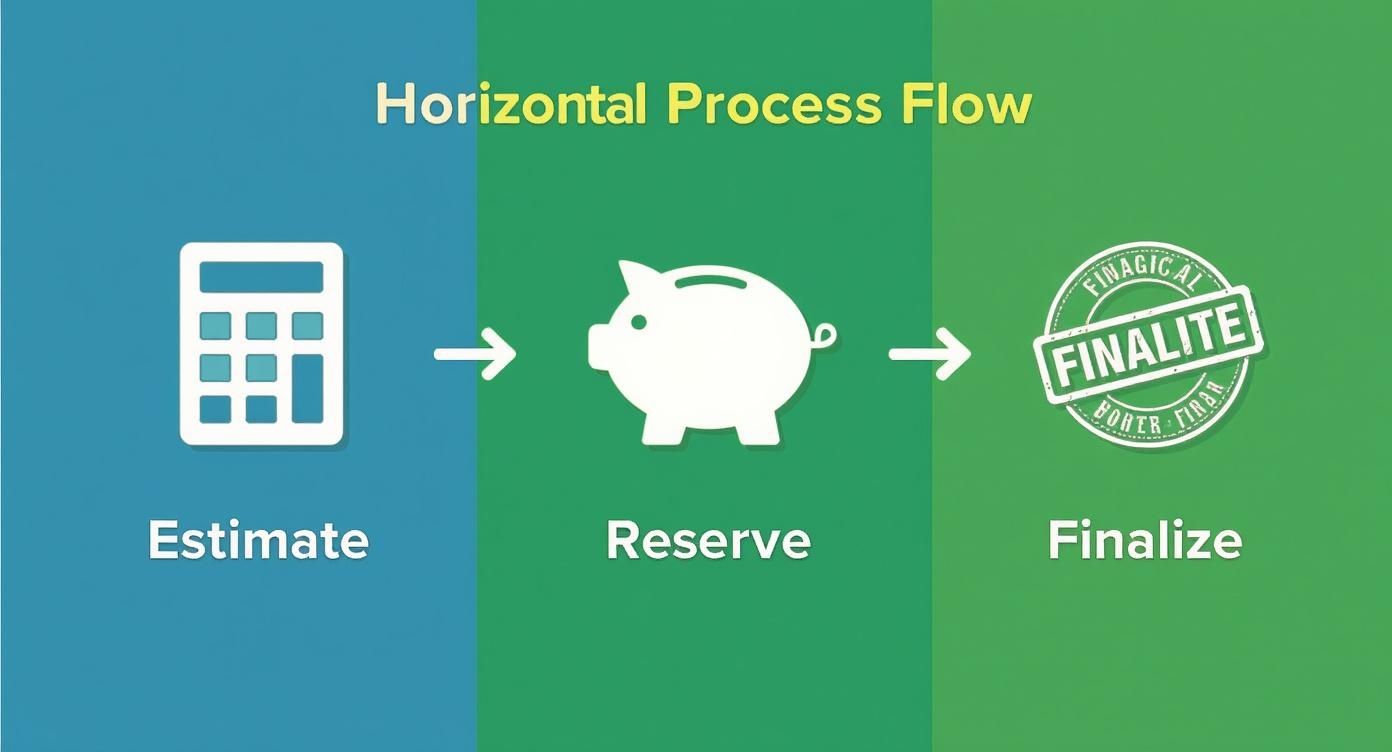
This process really highlights how a solid budget is built on careful estimation and setting aside reserves. That finalised number becomes the baseline you measure everything against.
To give you a clearer picture, here are some of the most essential metrics you'll want to keep an eye on.
| Metric | Calculation | What It Tells You |
|---|---|---|
| Cost Performance Index (CPI) | Earned Value (EV) / Actual Cost (AC) | Your cost efficiency. >1 is under budget, <1 is over budget. |
| Schedule Performance Index (SPI) | Earned Value (EV) / Planned Value (PV) | Your time efficiency. >1 is ahead of schedule, <1 is behind. |
| Cost Variance (CV) | Earned Value (EV) - Actual Cost (AC) | The difference between earned value and actual costs. A positive number is good. |
| Schedule Variance (SV) | Earned Value (EV) - Planned Value (PV) | The difference between earned value and planned work. Positive is good. |
| Estimate at Completion (EAC) | Budget at Completion (BAC) / CPI | Your new forecasted total project cost based on current performance. |
These metrics give you a powerful, at-a-glance dashboard of your project's health, allowing you to spot trouble long before it becomes a crisis.
Proactive Control and Communication
Spotting a variance is just the beginning. The real skill is in digging into why it happened and figuring out what to do next. This calls for regular budget review meetings with your team to pore over the numbers and forecast what’s coming down the line.
In these meetings, you should be focused on a few key actions:
- Analyse Variances: Is the overspend because of a bad estimate, a scope change, or just inefficient work? Get to the root cause.
- Forecast at Completion: Based on how things are going, what’s the new projected total cost? Be realistic.
- Develop Corrective Actions: What steps can you take to pull the project back on track? This might mean shifting resources, finding efficiencies, or making a formal request for a budget increase.
Communicating these issues to your stakeholders is absolutely critical. Don't hide the bad news. Be upfront about any financial hiccups and present your plan to get things sorted. This builds trust and ensures no one is blindsided later on.
Ultimately, sharp tracking is the foundation for solid cash flow. To make sure this whole process runs like clockwork, take a look at our insights on billing and invoicing best practices to connect your project tracking directly to your revenue stream.
Looking Ahead: Financial Risks and Opportunities
Solid financial management on a project isn't just about reacting to problems—it's about staying one step ahead. Think of it as scanning the horizon for both thunderstorms and clear skies. You need to identify potential financial risks before they hit and, just as importantly, spot opportunities that can give your budget some much-needed breathing room. This kind of foresight is what separates a well-run project from one that's constantly putting out fires.
A "risk" isn't just a guaranteed problem. It’s any uncertainty that could mess with your project's bottom line. Some are obvious, like a key supplier jacking up their prices overnight. Others are far more subtle. Imagine you're on an international project; currency fluctuations over a few months could quietly eat away at your profit margins without you even noticing.
Getting a Handle on Financial Threats
First things first: get these potential issues out of your head and down on paper. Get the team together and brainstorm a risk register. This is a living document where you list every financial threat you can think of. Don't hold back here—consider everything from technical gremlins and resource shortages to major market shifts.
Once you have your list, it's time to figure out what you'll do about them. Most of your plans will fall into one of these buckets:
- Avoidance: Sometimes the best move is to change the plan entirely to sidestep a risk. If that new, untested piece of tech looks like a budget-buster waiting to happen, you might just stick with a more reliable, established alternative.
- Transference: This is all about shifting the financial hit to someone else. It's the whole idea behind getting insurance, or locking in a fixed-price agreement with a supplier so they carry the risk of cost increases, not you.
- Mitigation: These are the practical steps you take to make a risk less likely or less painful if it happens. A classic example is locking in a price with a key supplier early on to shield the project from future inflation.
- Acceptance: For small risks that won't sink the ship, you might just decide to accept the potential cost. You’re not ignoring it; you’re earmarking a bit of your contingency fund to cover it, just in case.
The point isn't to create a project with zero risk—that’s a fantasy. The goal is to truly understand your financial exposure and have a clear, practical plan ready for your biggest threats.
This kind of adaptive thinking is crucial right now. The wider economic picture shows UK firms are dealing with some serious ups and downs. The proportion of companies running at a loss is hovering around 14%. While new business lending has grown, the way companies are getting financed is changing. This backdrop just hammers home the need for sharp risk management and flexible financial planning. You can dig into more of these UK business statistics to see how they might shape your own project environment.
Seizing Financial Opportunities
But hey, financial management isn't just about playing defence. You've got to play offence, too. Opportunities are the flip side of risks—they're chances to save money, add more value, or even finish ahead of schedule. And just like risks, you have to actively hunt for them.
For instance, could you negotiate a hefty bulk discount by ordering all your rendering hardware at once instead of in stages? Maybe a new AI tool could automate a mind-numbing task, saving hundreds of labour hours and freeing up your team for more creative work.
Keeping your eyes peeled for these moments can make a massive difference to your bottom line. Just as you have a risk register, it’s a brilliant idea to keep an opportunity log to track these potential wins and assign people to chase them down.
Communicating Financials to Stakeholders Effectively

Keeping your stakeholders in the loop about project finances is completely non-negotiable. Let’s be clear: this isn’t just about firing off a few spreadsheets. Real communication means turning complex data into a clear story that builds trust, keeps expectations realistic, and empowers everyone to make smarter decisions.
The goal is simple: get the right information to the right people in a way they can actually use.
You have to tailor your approach. The level of detail your finance team craves is miles away from what a busy exec wants to see. A line-by-line breakdown is perfect for your finance colleagues, but a C-suite executive needs a high-level dashboard showing the most important numbers at a glance.
Think about it this way: instead of sending your project sponsor a dense spreadsheet, why not create a one-page visual summary? Use a couple of charts to show budget vs. actual spend, a simple forecast for the estimated cost at completion, and a quick variance analysis. It respects their time and gets straight to the point.
Crafting Reports That Actually Get Read
The best financial reports tell a story. They don't just throw numbers on a page; they explain what those numbers mean for the project's health and what’s coming next. Your job is to be a financial translator, turning raw data into actionable insights for different audiences.
To pull this off, make sure your reporting always nails three core components:
- Budget vs. Actuals: This is your foundation. Show what you planned to spend against what you’ve really spent, both for the whole project and for specific tasks.
- Variance Analysis: This is where you explain the "why." If you’re over budget, what happened? Was it an unexpected supplier cost, or did a task just take more hours than planned? Be honest and clear.
- Forecast at Completion (FAC): Based on how things are going, what do you now project the total cost will be? This gives stakeholders a heads-up and helps them plan for what’s down the road.
The real power of financial reporting isn't just in the numbers—it's in the conversations they start. Your reports should be a catalyst for discussion, letting the team and stakeholders tackle issues before they blow up into full-blown crises.
This kind of financial savvy is even more critical when you consider the wider economic picture. For instance, the UK's financial and insurance services sector recently contributed £208.2 billion to the economy, which is 8.8% of the country's total output. With this sector poised for more growth, project managers have to navigate evolving financial products and compliance rules that can directly hit project funding. Digging into these key financial trends and insights for the UK can give you a much better handle on this dynamic environment.
Presenting Data with Confidence
How you present the information is just as important as the data itself. When you’re in a meeting talking about the budget, don’t just read off a list of numbers. It’s boring, and nobody will remember it.
Instead, guide the conversation. Start with the big picture—the project’s overall financial health—and then drill down into the specific areas that need attention. Use visuals to make your points hit home. A simple red, amber, and green status for different budget lines communicates health way faster than a column of figures.
Of course, always be ready to answer detailed questions, but lead with the story. When you communicate your project's financial status with clarity and confidence, you make sure every stakeholder stays informed, aligned, and on your side.
Common Questions About Project Financial Management
When you're deep in the trenches of a project, the financial side of things can throw up some tricky questions. It doesn't matter if you're a seasoned pro or just starting out; getting your head around the numbers is non-negotiable. Here are a few of the questions we hear all the time.
What’s the Real Difference Between a Budget and a Forecast?
This one trips people up constantly, but the distinction is absolutely crucial for staying in control.
Think of your project budget as the plan you agreed upon at the very beginning. It's the approved, fixed financial blueprint for the entire project. It's your official baseline, the yardstick you'll use to measure how well you're doing.
A forecast, however, is your living, breathing prediction of where you'll end up financially. It's your "best guess" of the final project cost, and you'll update it as you go, based on what's actually happening. For example, your initial budget might be £100,000. But if labour costs are running hotter than expected after two months, your forecast might now predict a final spend of £110,000. The budget hasn't changed, but your forecast is giving you an early warning.
How Can AI Actually Help with Project Finances?
Artificial intelligence is quickly becoming an indispensable tool for managing the money side of projects. It’s about more than just tracking expenses. AI-powered platforms can spot spending trends, flag potential budget overruns long before they become a real problem, and even suggest smarter ways to allocate your funds.
AI fundamentally changes budgeting from a reactive chore into a proactive, intelligent process. It gives project managers the breathing room to focus on strategy instead of being buried in spreadsheets.
For instance, AI can automate the painstaking process of expense tracking by pulling data directly from timesheets and supplier invoices, giving you a real-time view of your costs. It can also run complex "what-if" scenarios, helping you see the financial fallout of different risks or opportunities—a massive advantage for any complex project.
How Do I Deal with Unexpected Costs?
Let's be honest, no project plan survives contact with reality unscathed. Surprises are part of the game. The trick is to have a game plan for them before they pop up. This is exactly what your contingency and management reserves are for.
- For the "known unknowns": This is where you use your contingency reserve. Let’s say you flagged a specific supplier as a potential delay risk. If they end up running late and it costs you, that contingency fund is there to absorb the hit without blowing up your main budget.
- For the "unknown unknowns": This is management reserve territory. A sudden, out-of-the-blue shift in the market that jacks up your material prices would be a classic example. Tapping into this reserve is a bigger deal and usually needs a sign-off from senior management.
When a surprise cost hits, the first step is always to figure out the real impact. Can you cover it with your reserves? If the answer is no, you'll need to raise a formal change request to get more funding. Make sure you clearly lay out what's happened and build a solid case for why the extra cash is needed.
Ready to take control of your studio's finances and scheduling? freispace offers an AI-native platform designed for modern post-production, combining resource planning, budget control, and streamlined invoicing into one intuitive system. Discover how you can optimise your projects at https://freispace.com.

